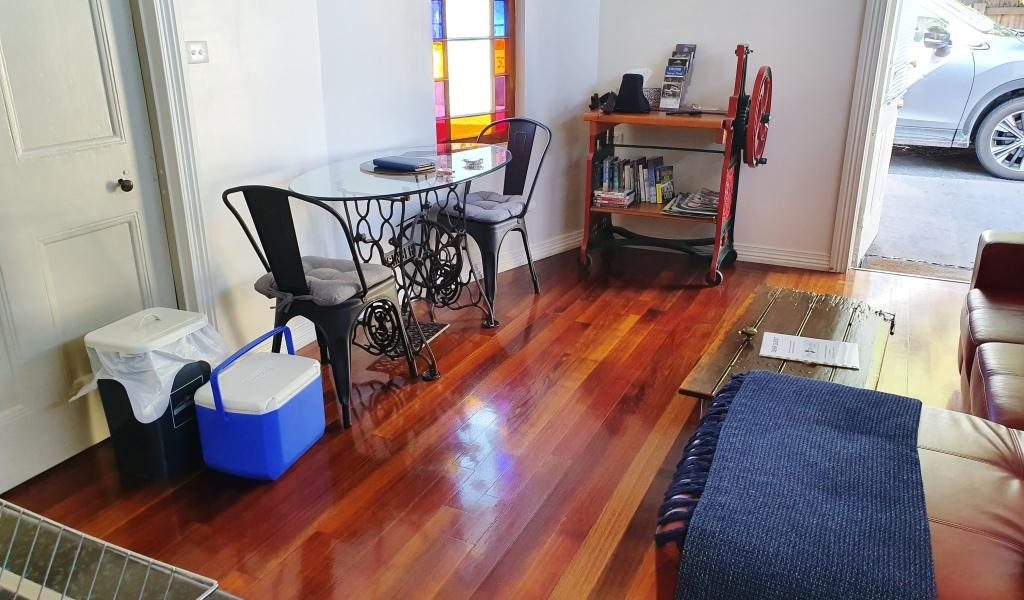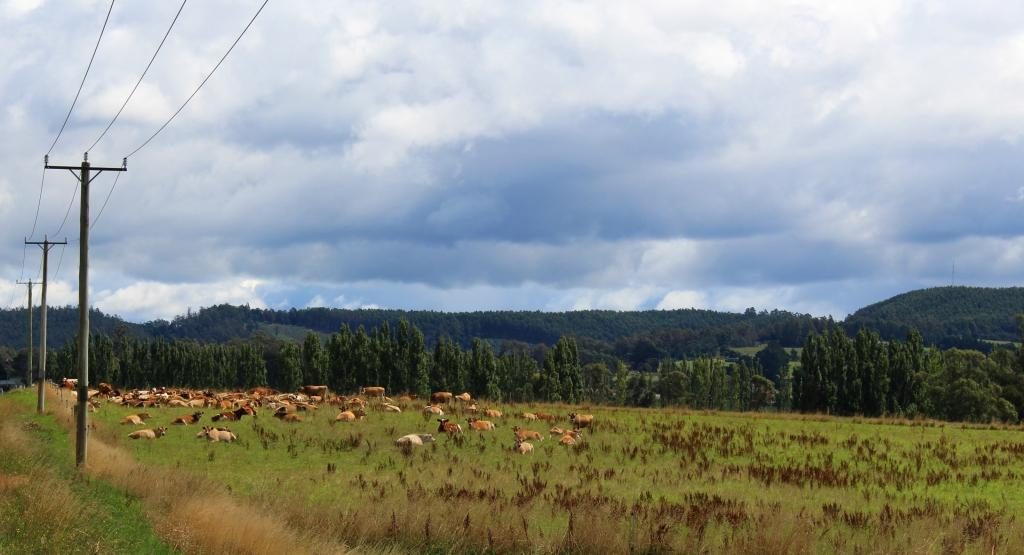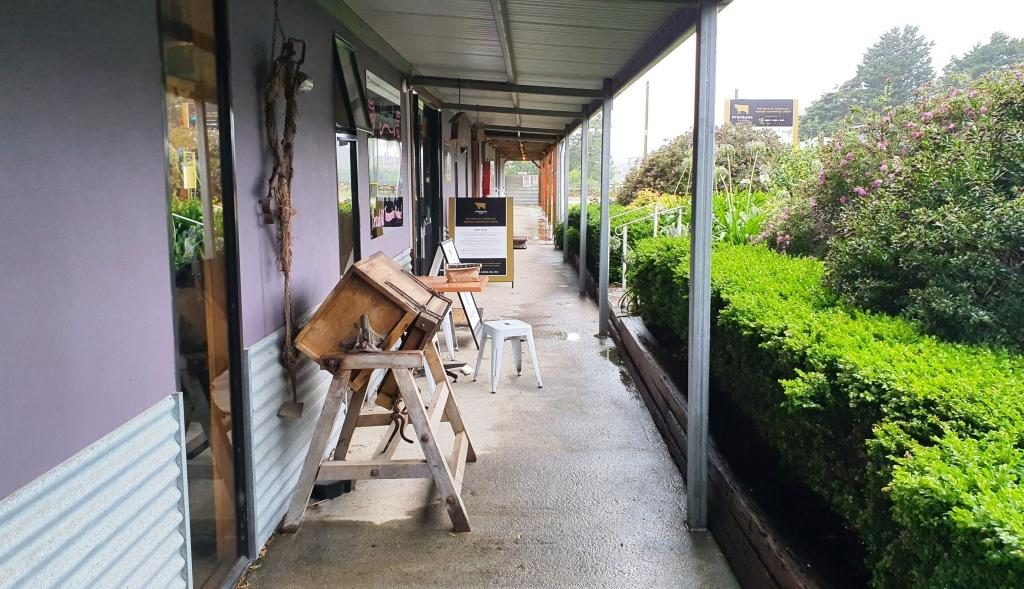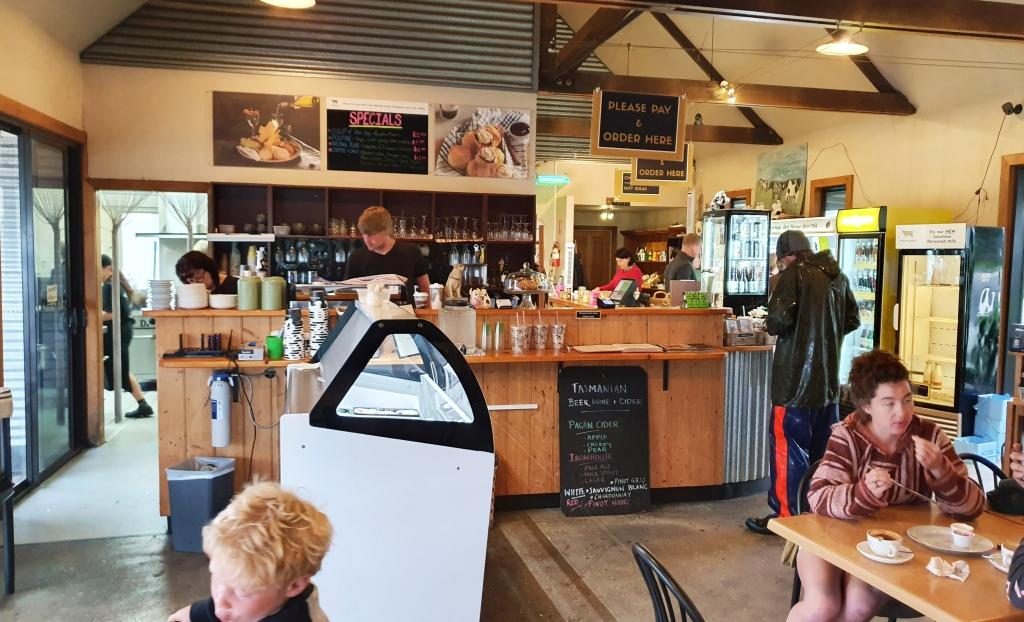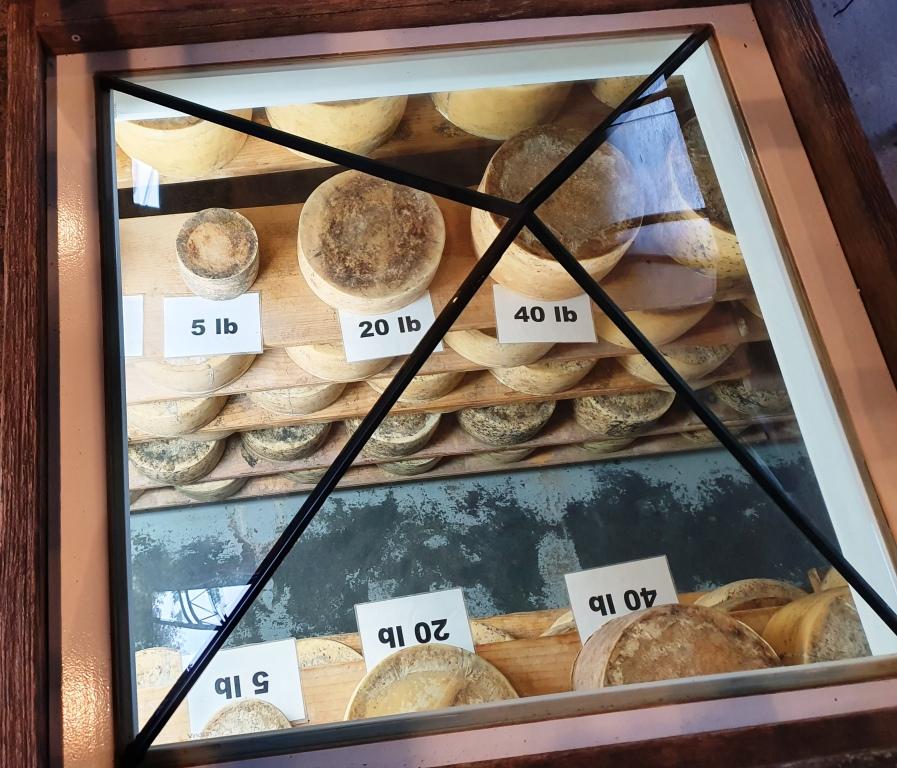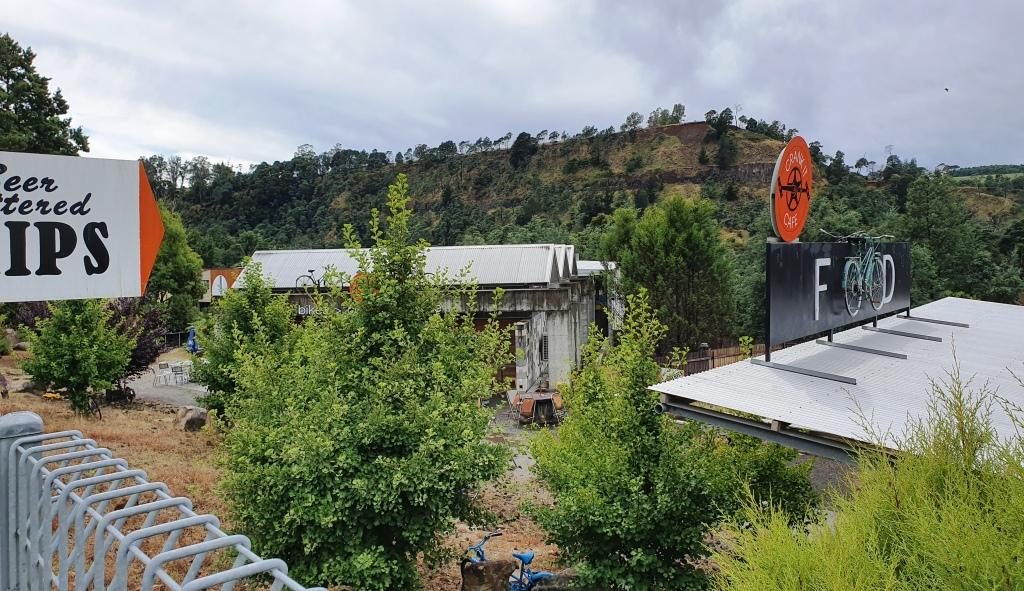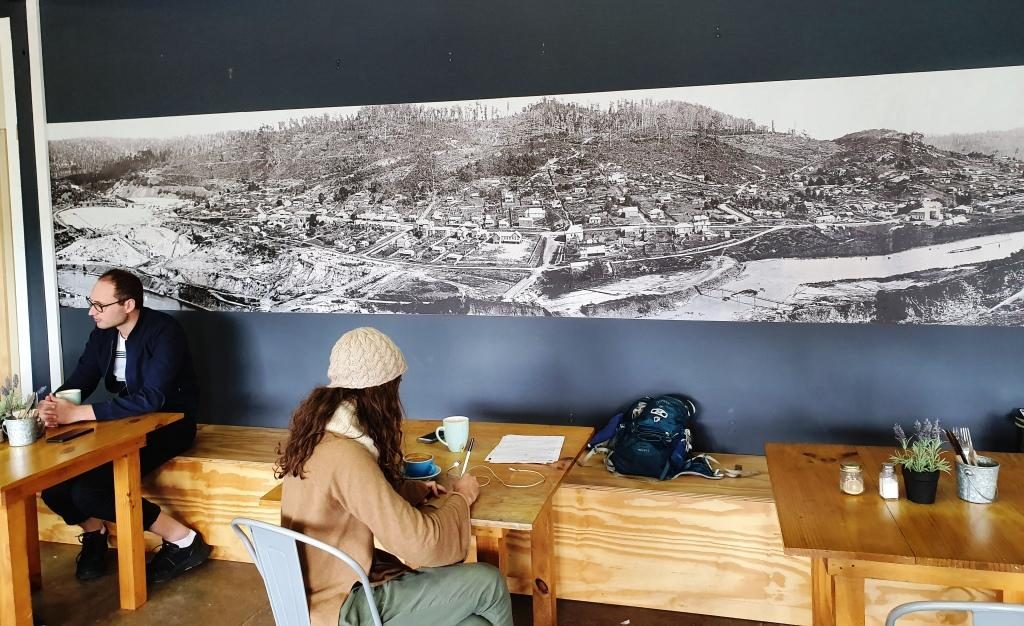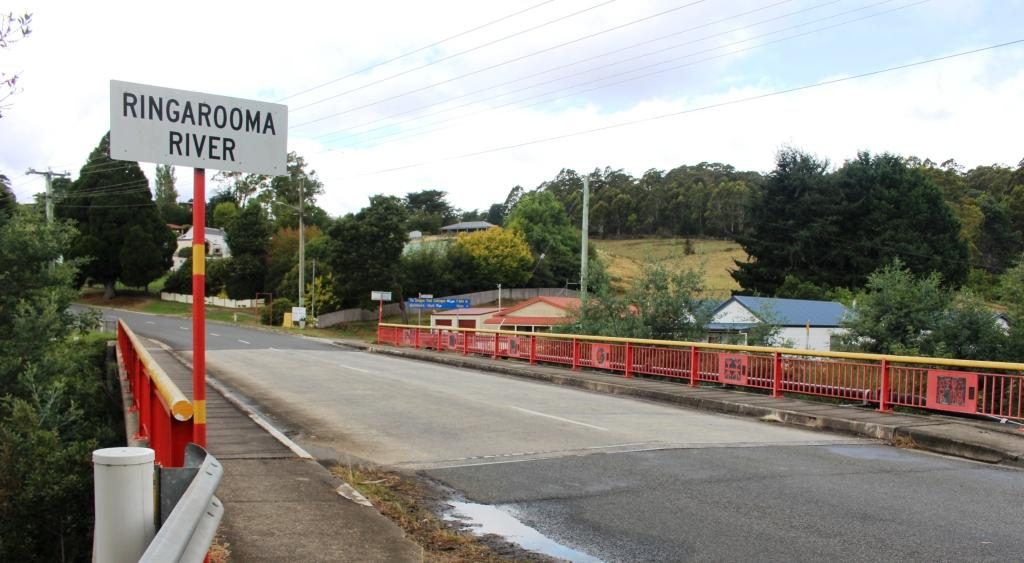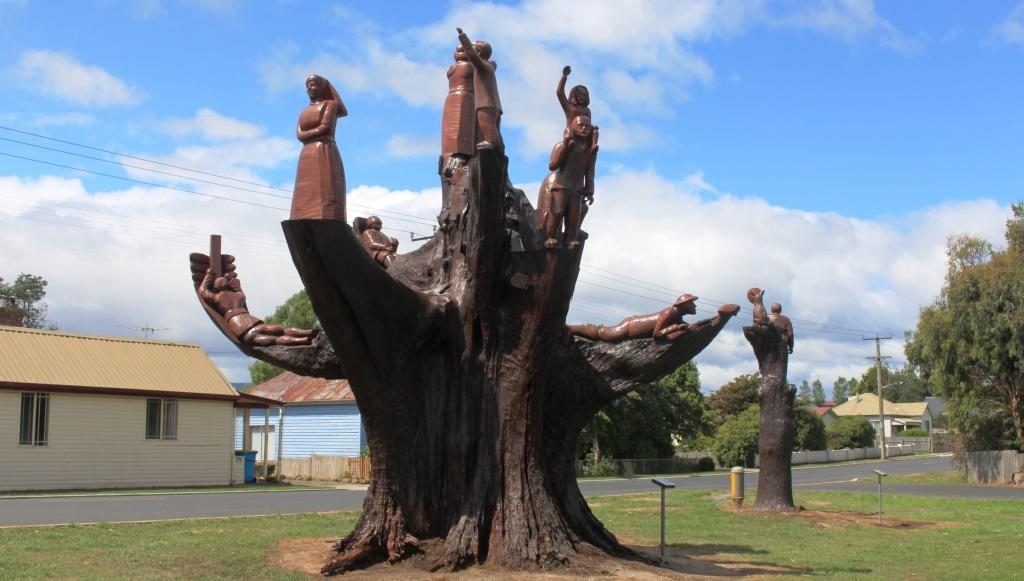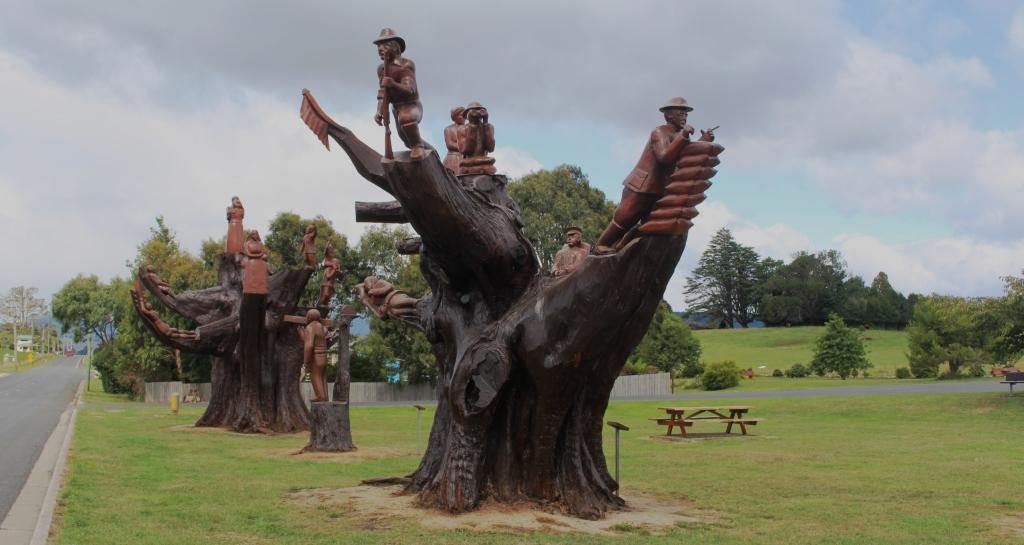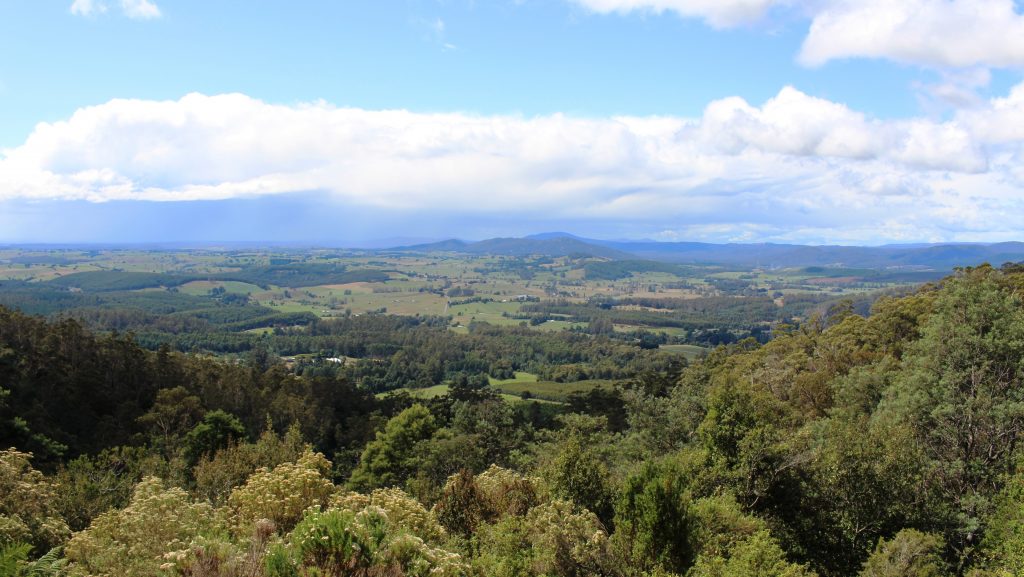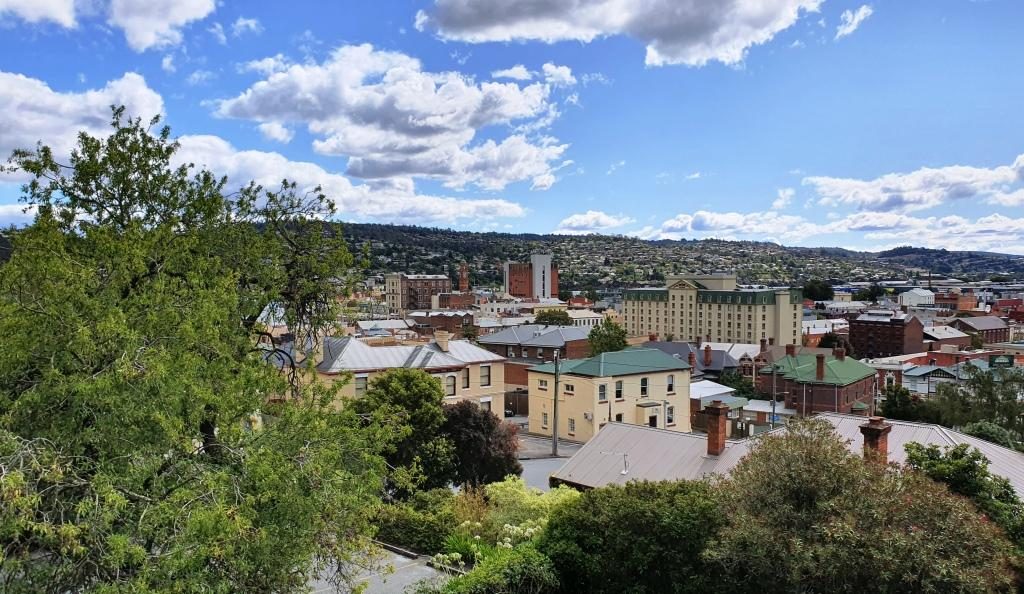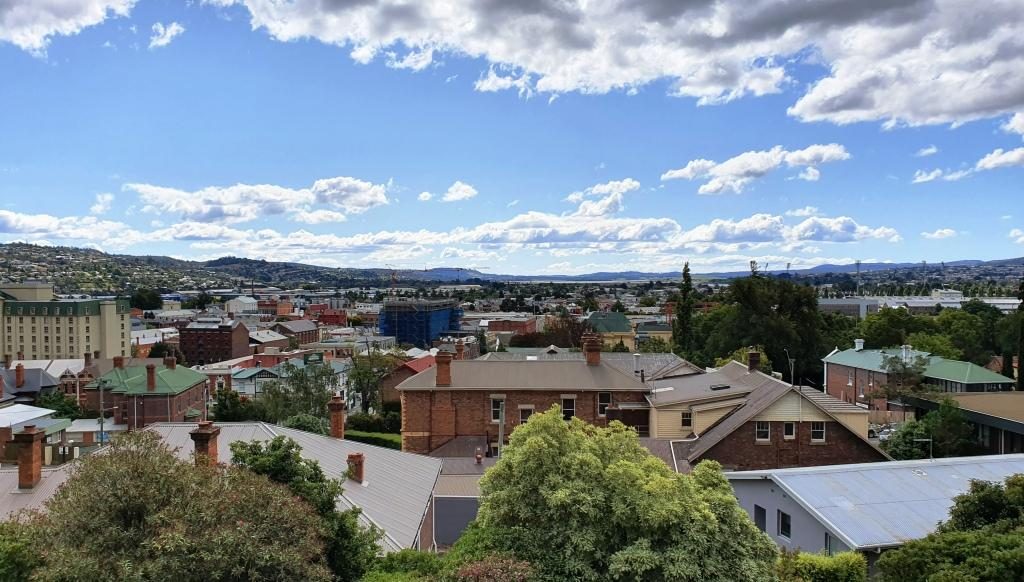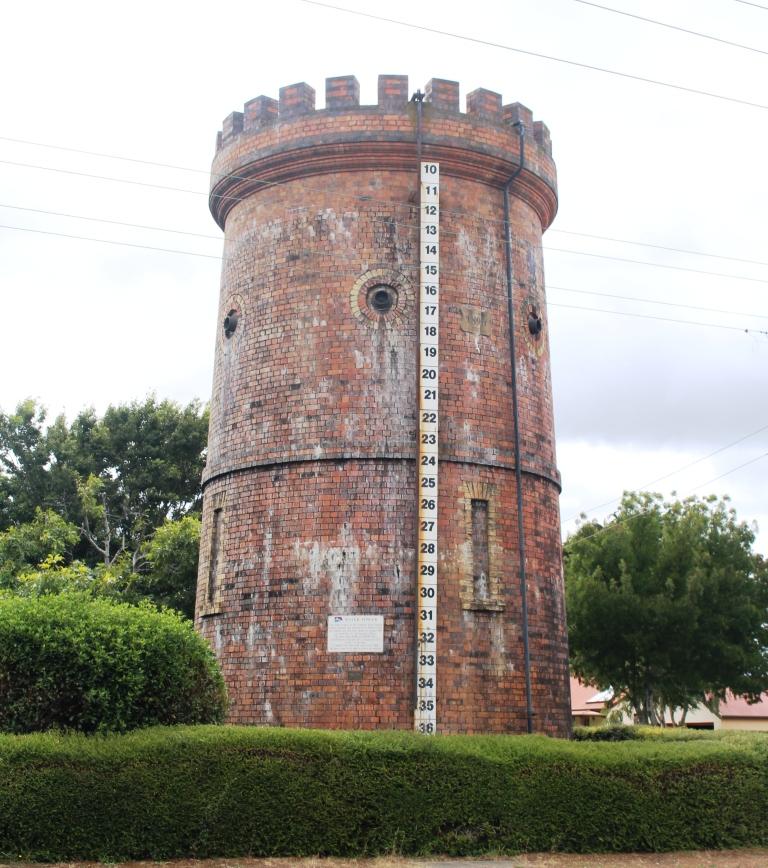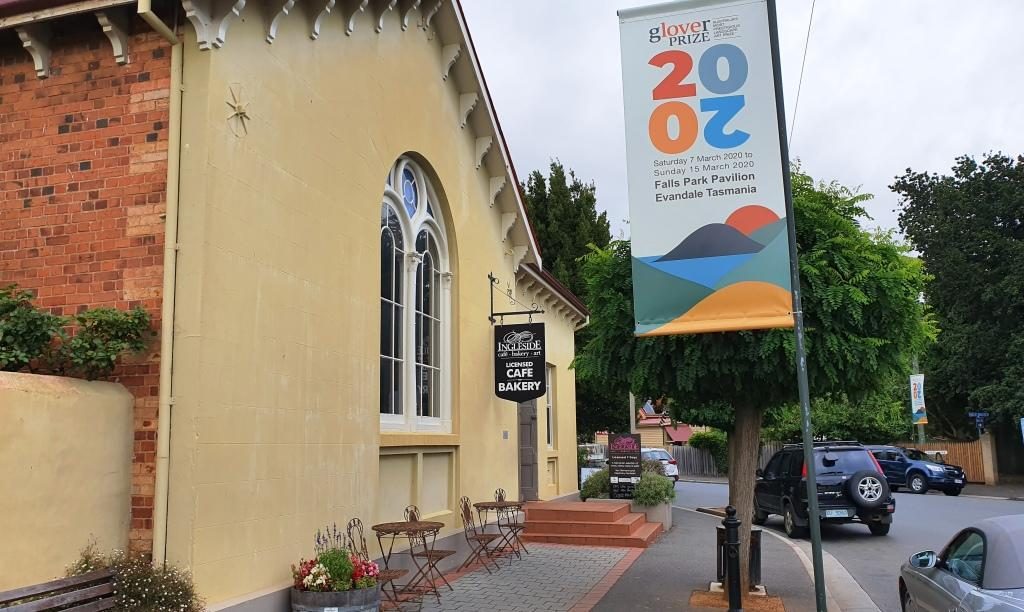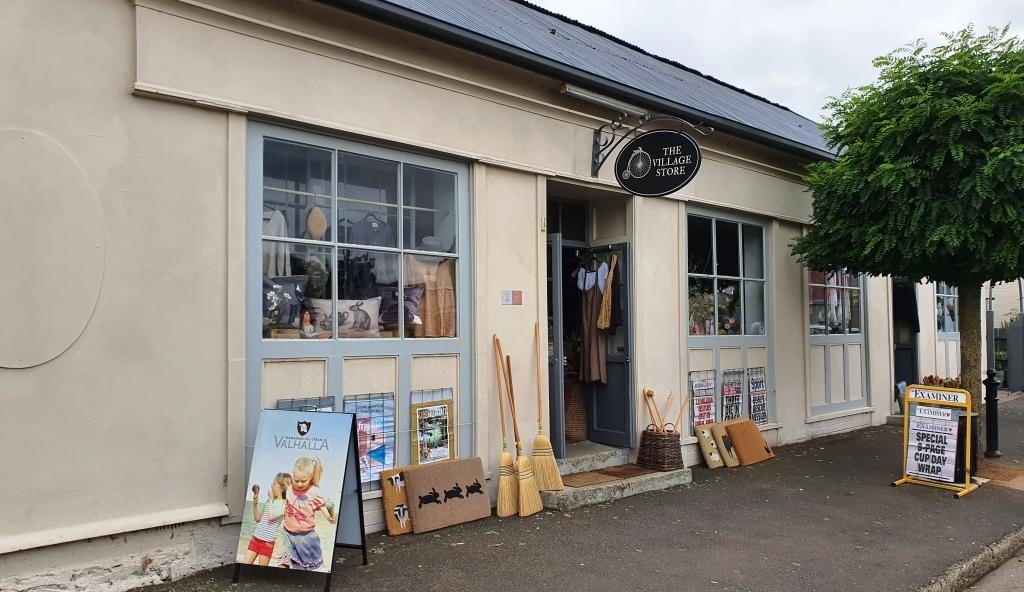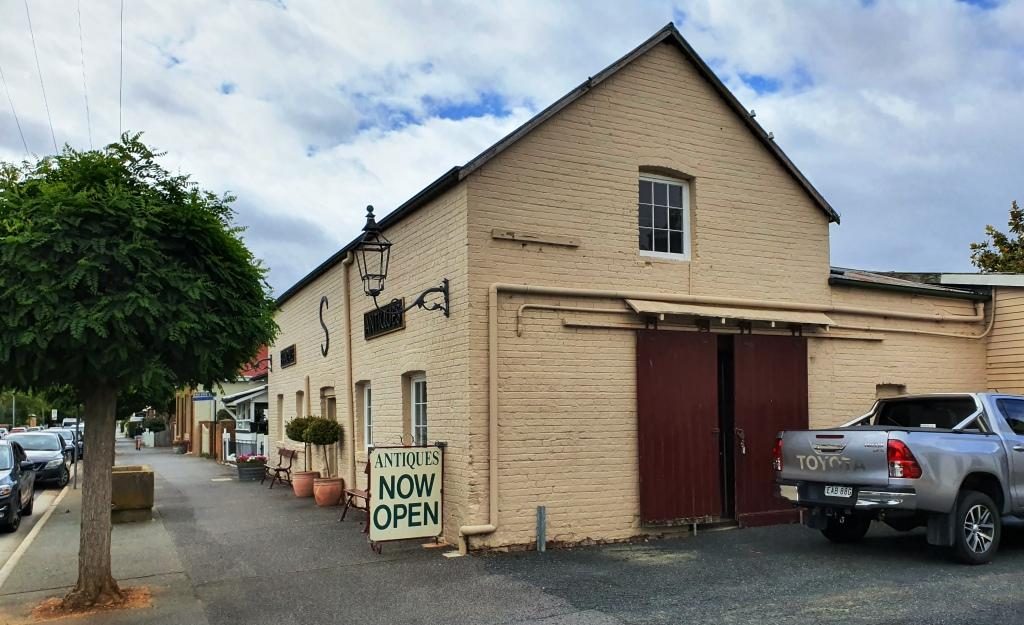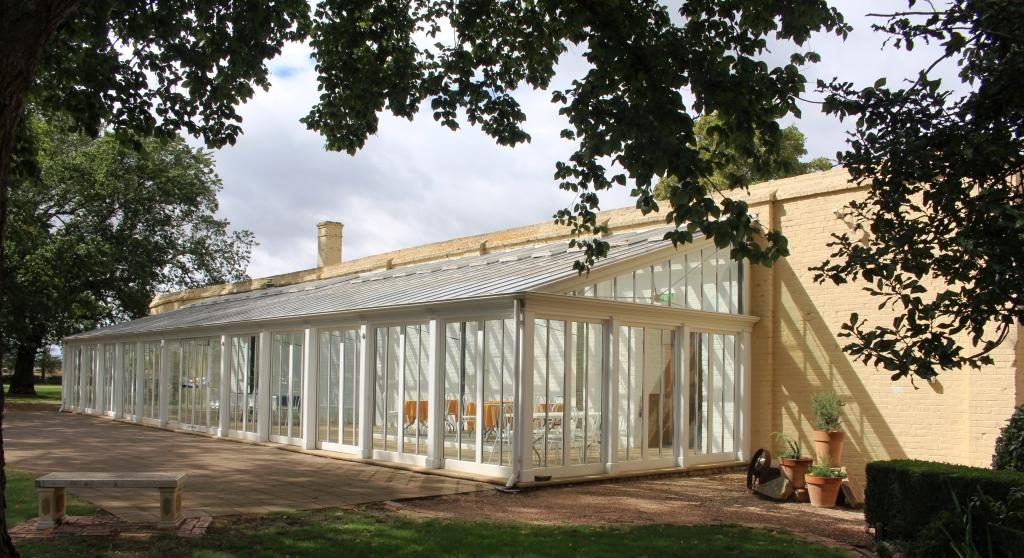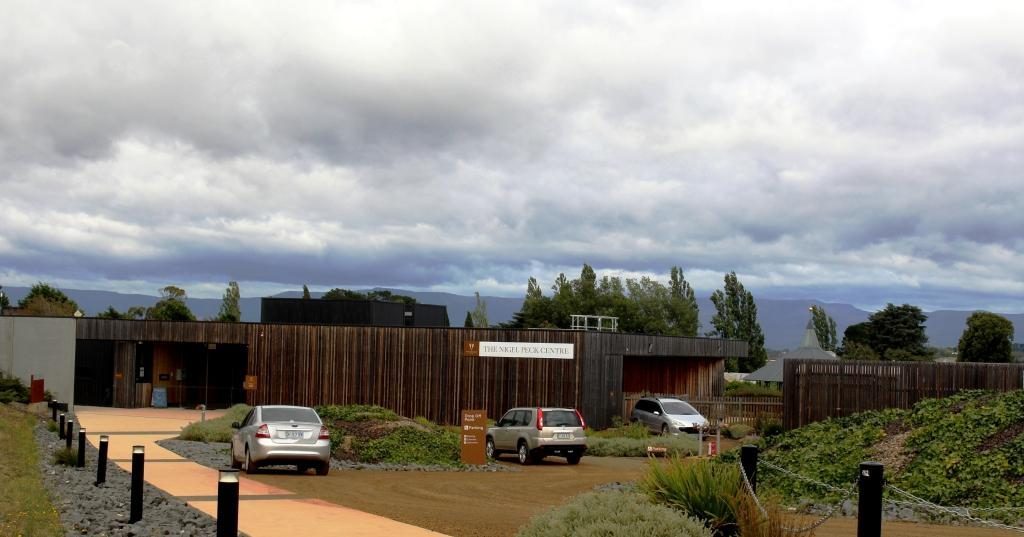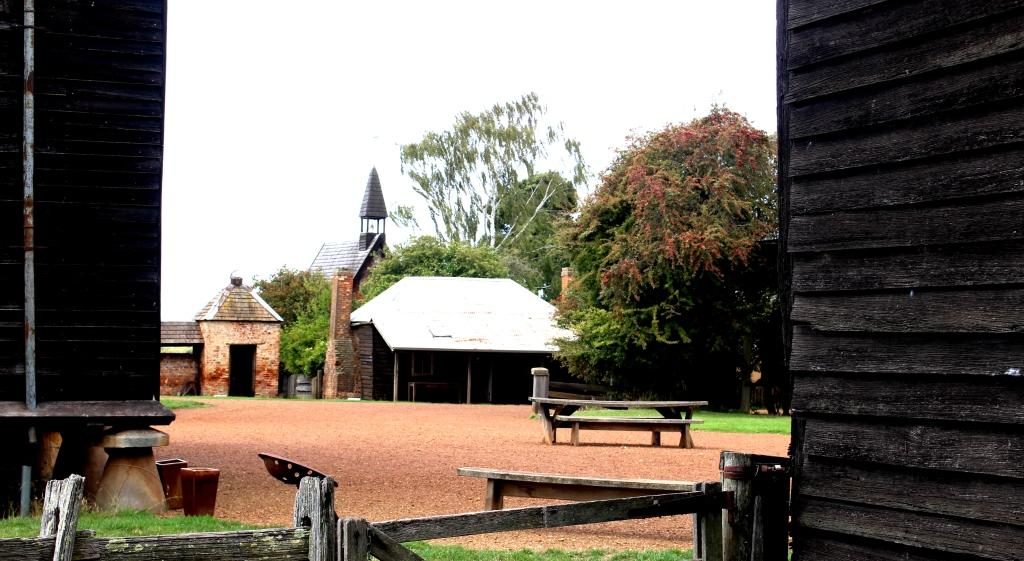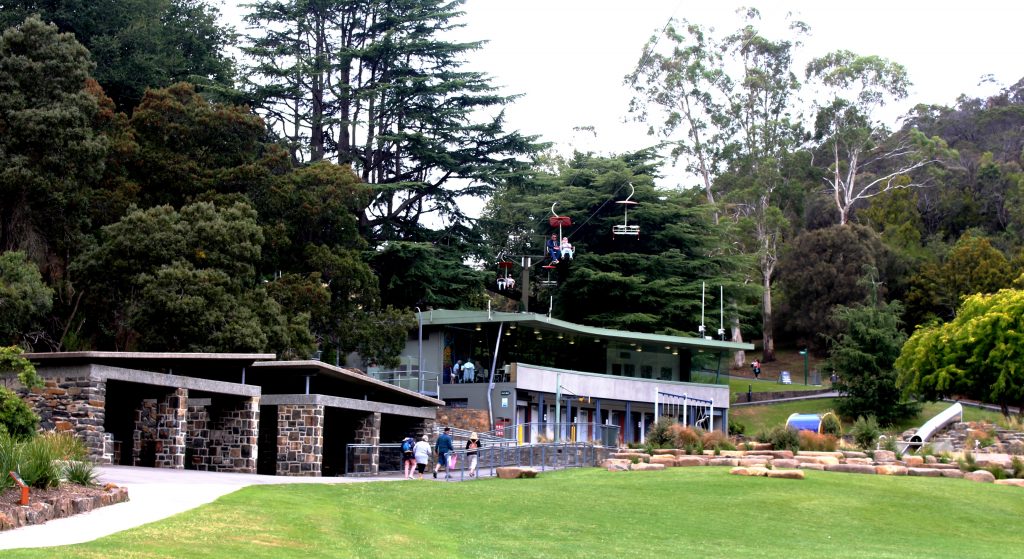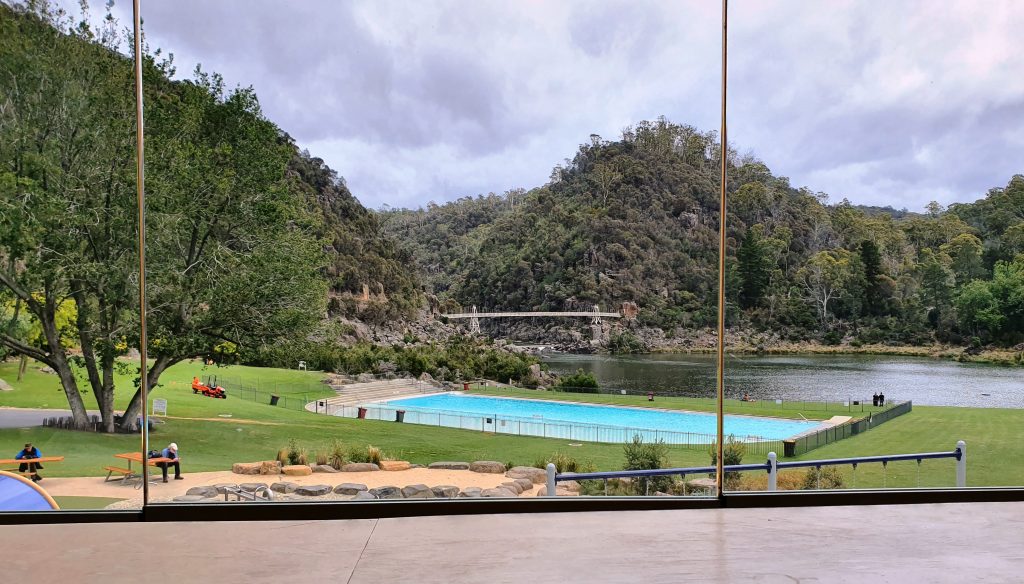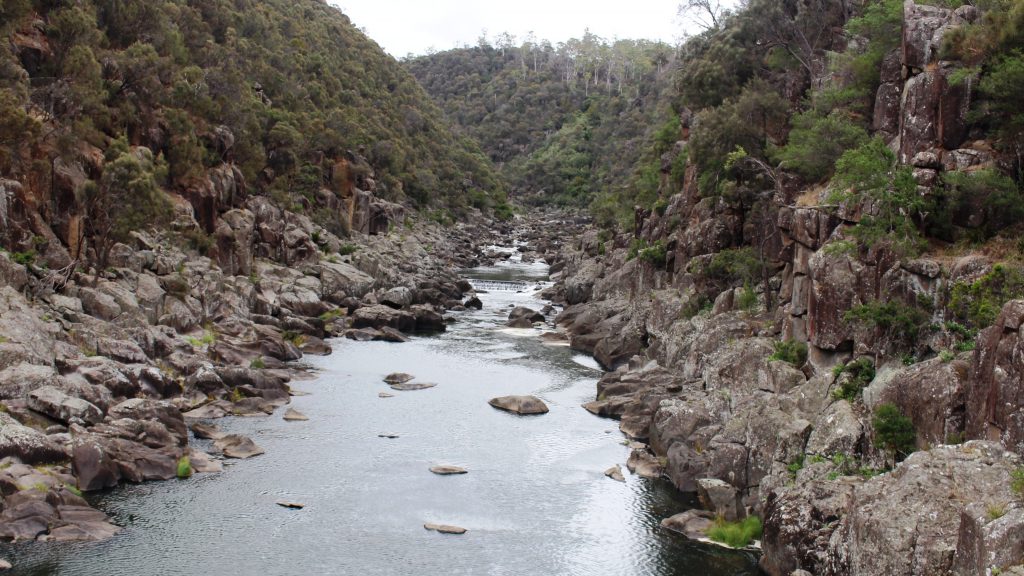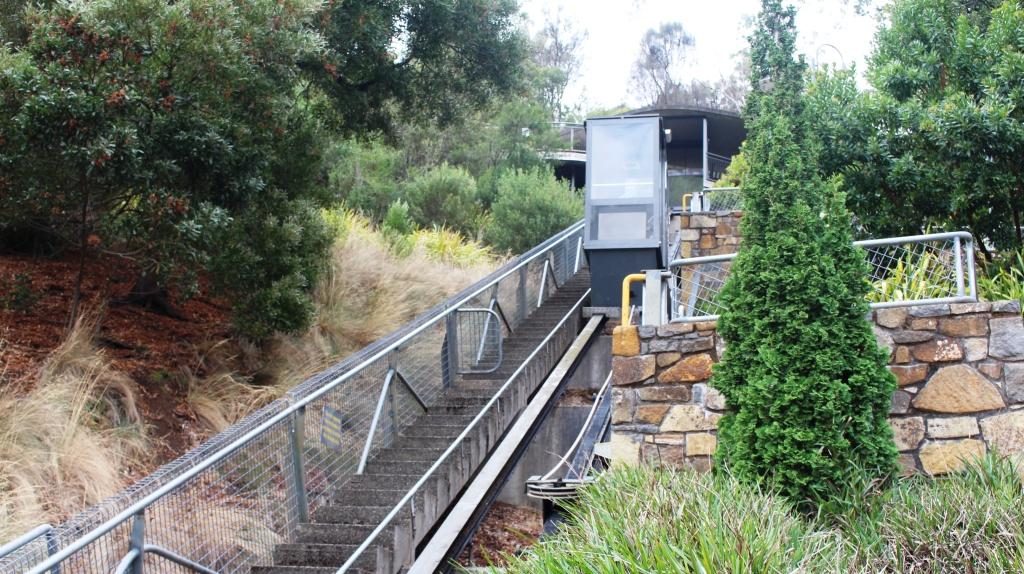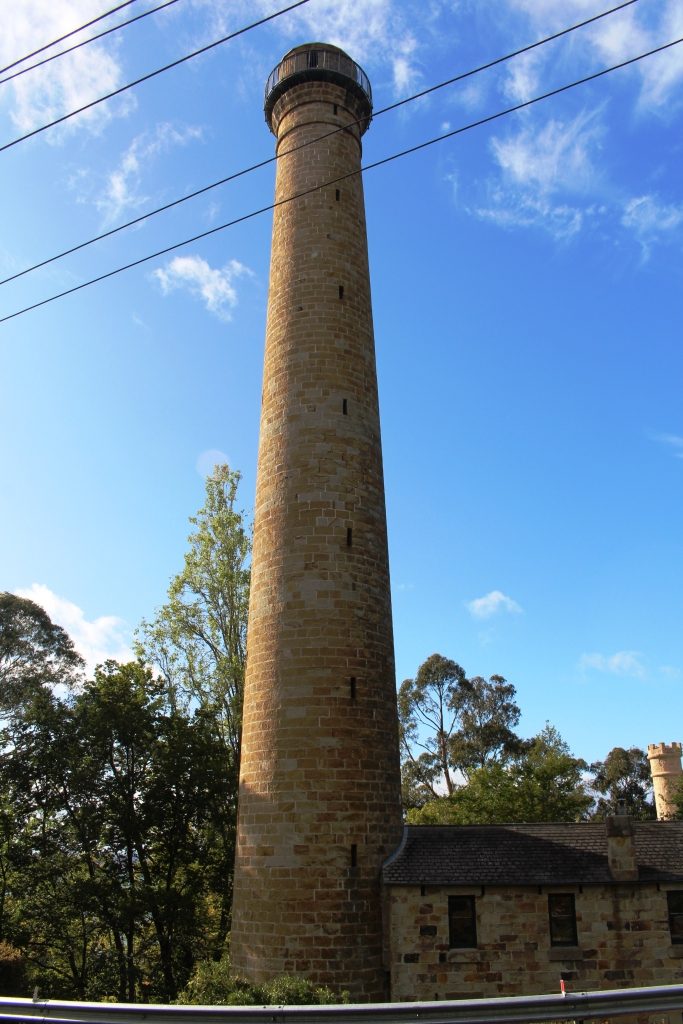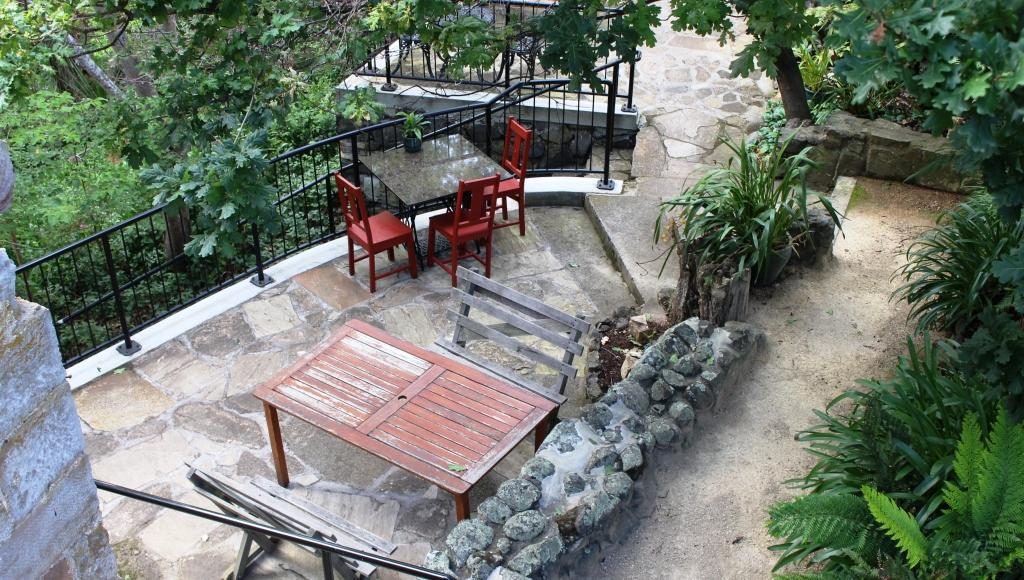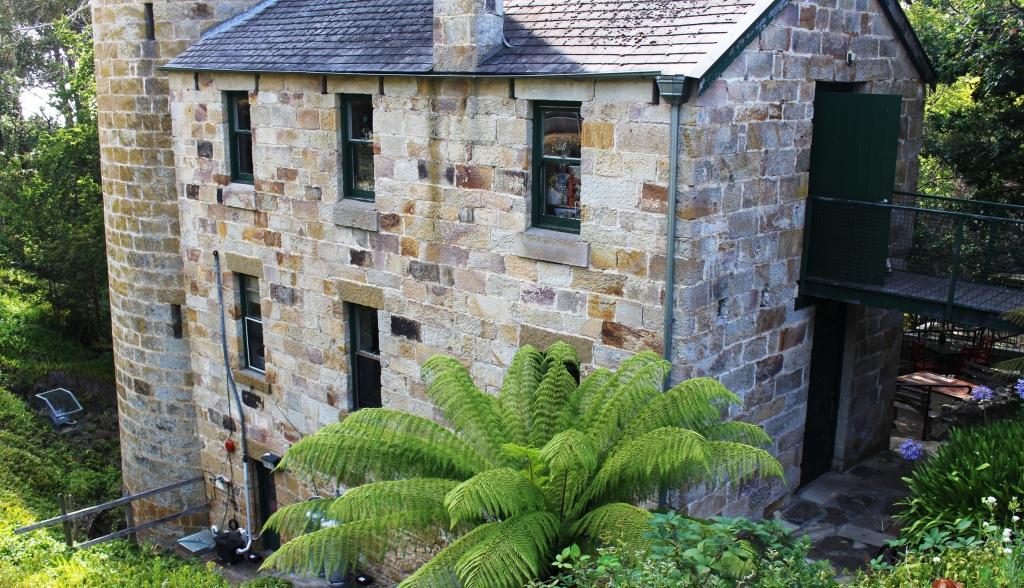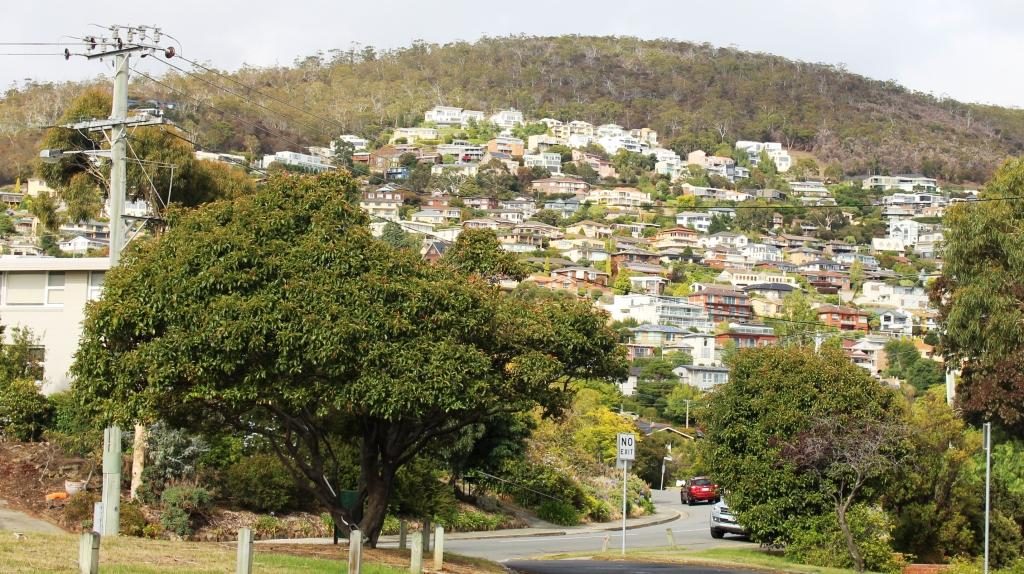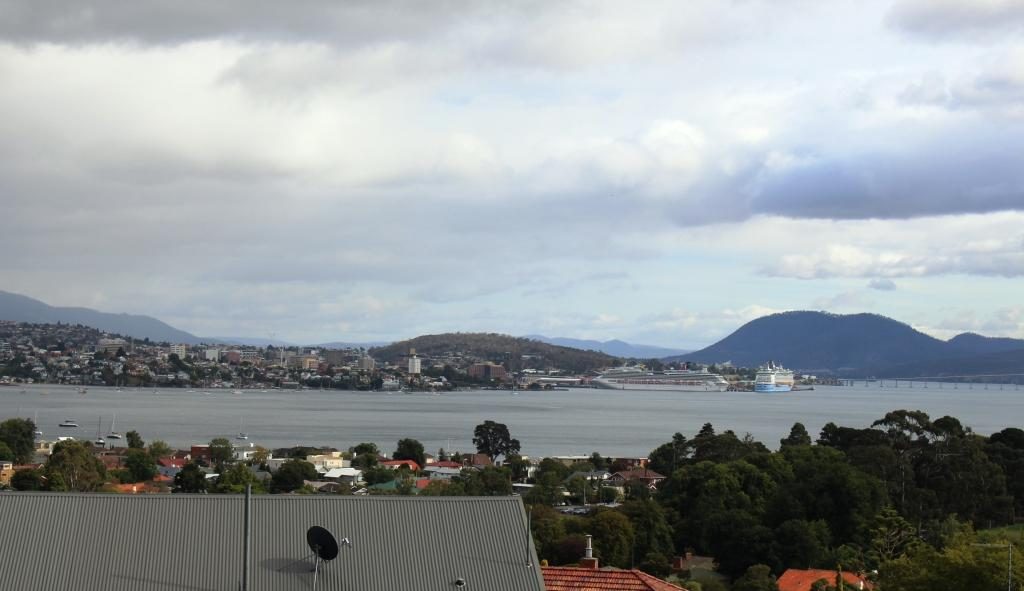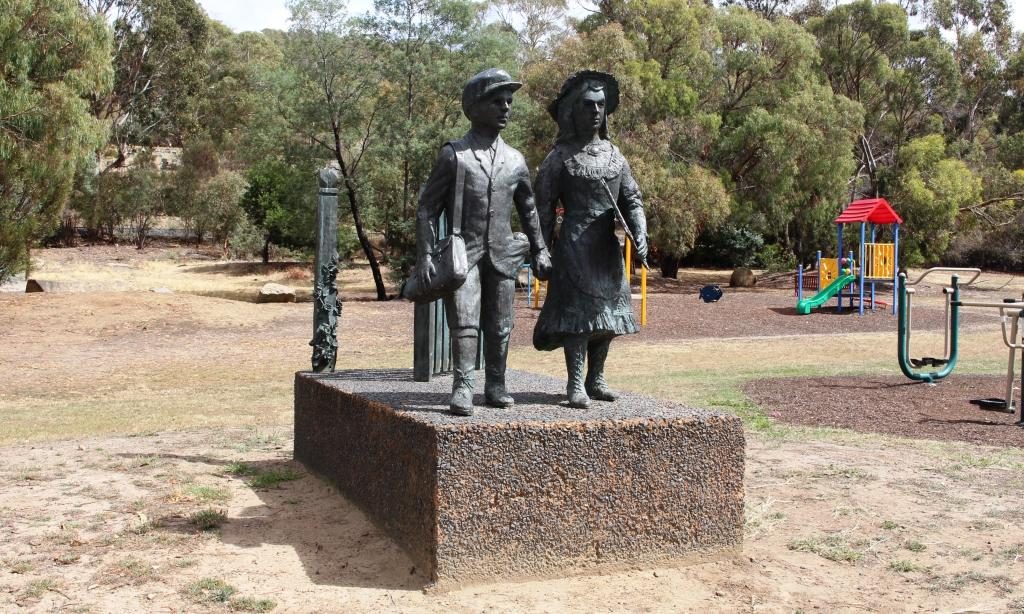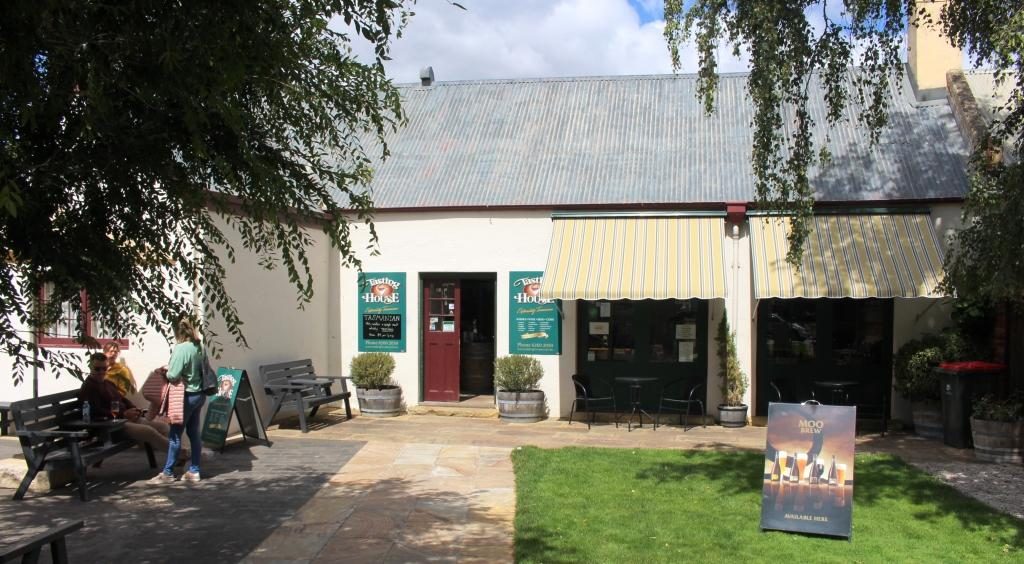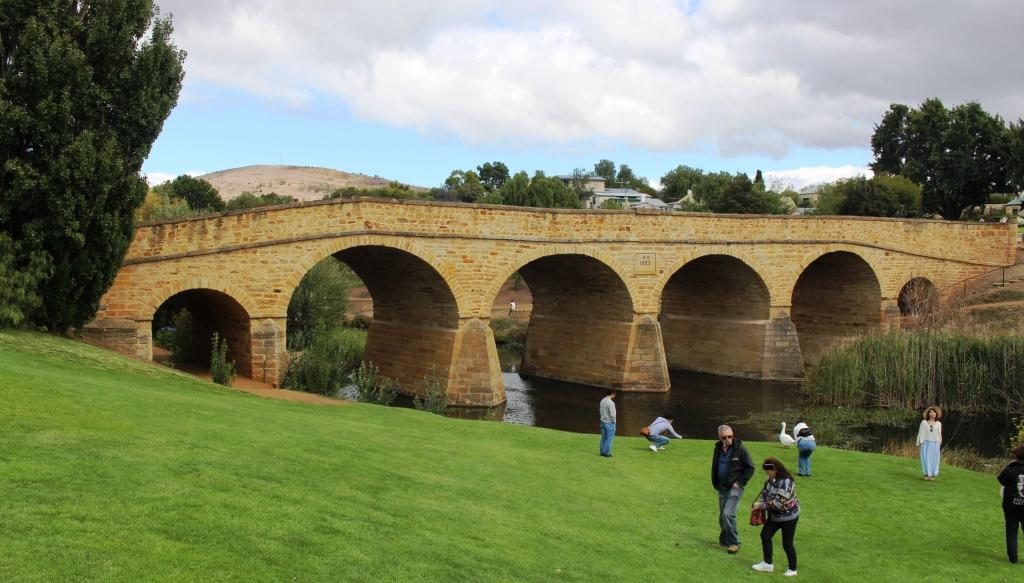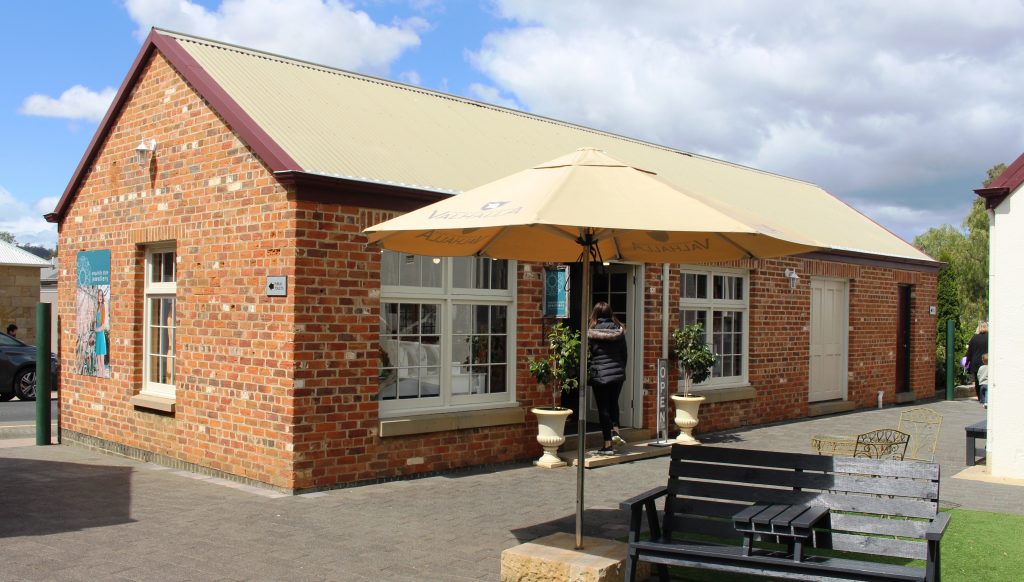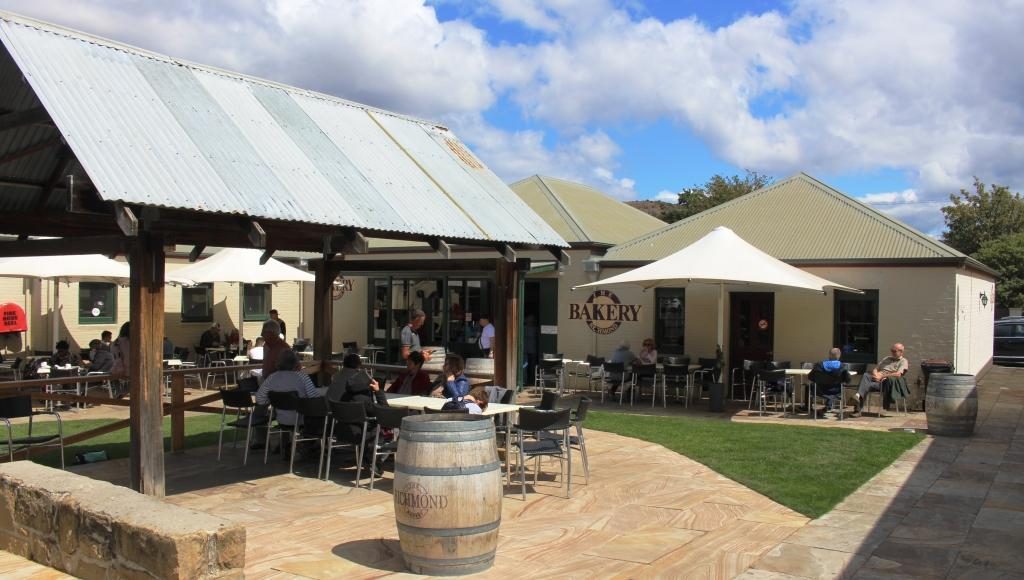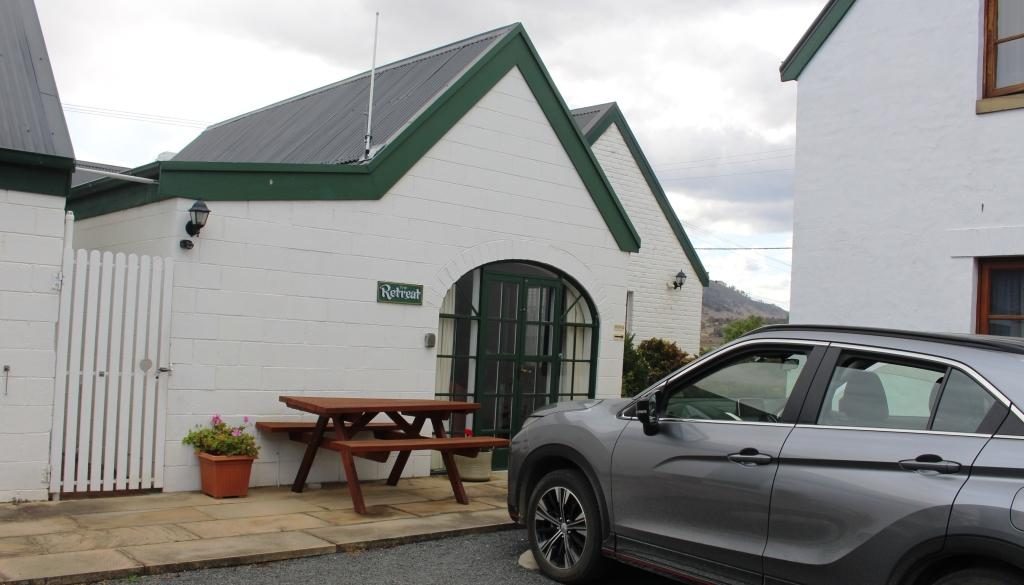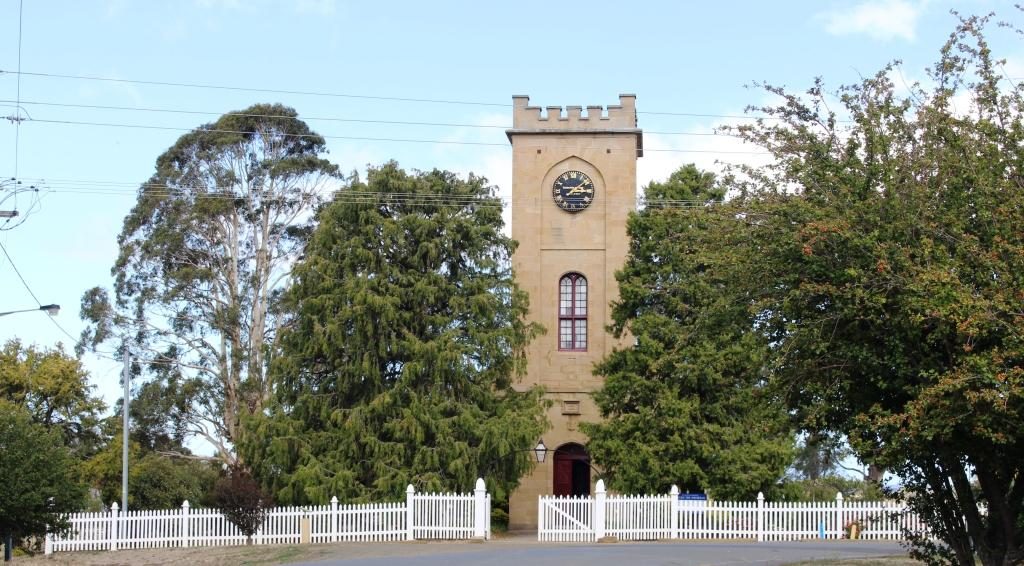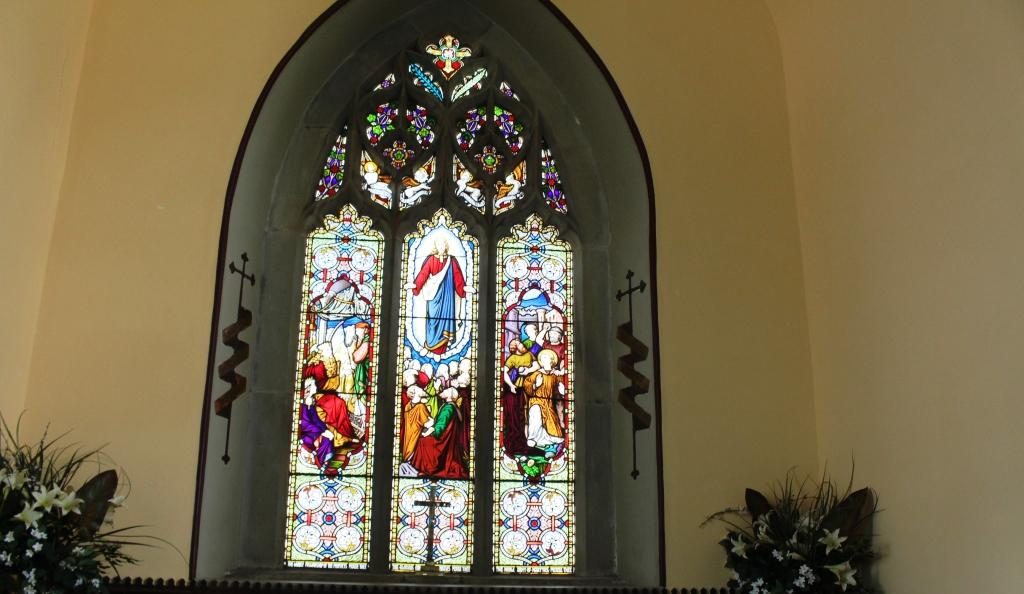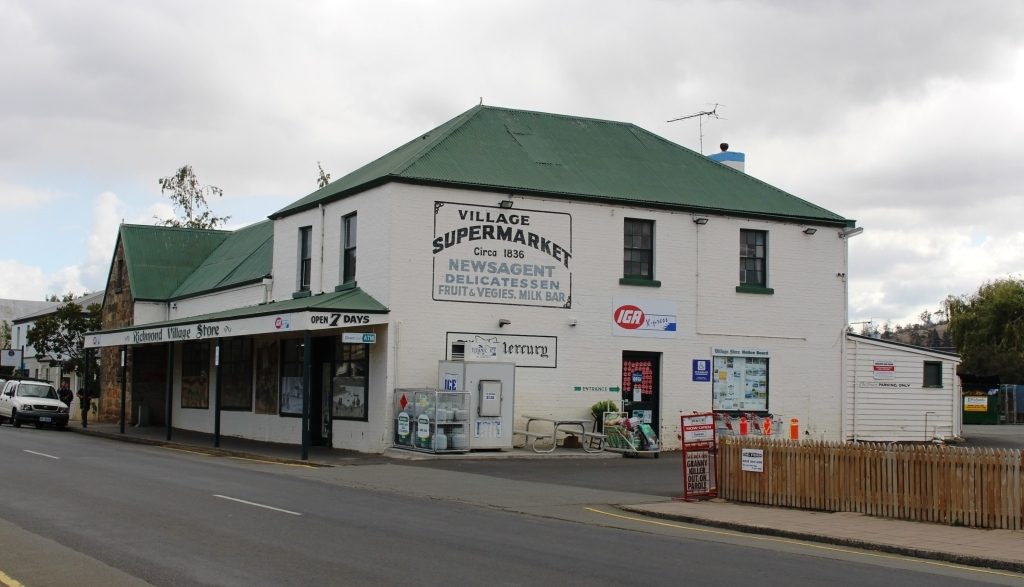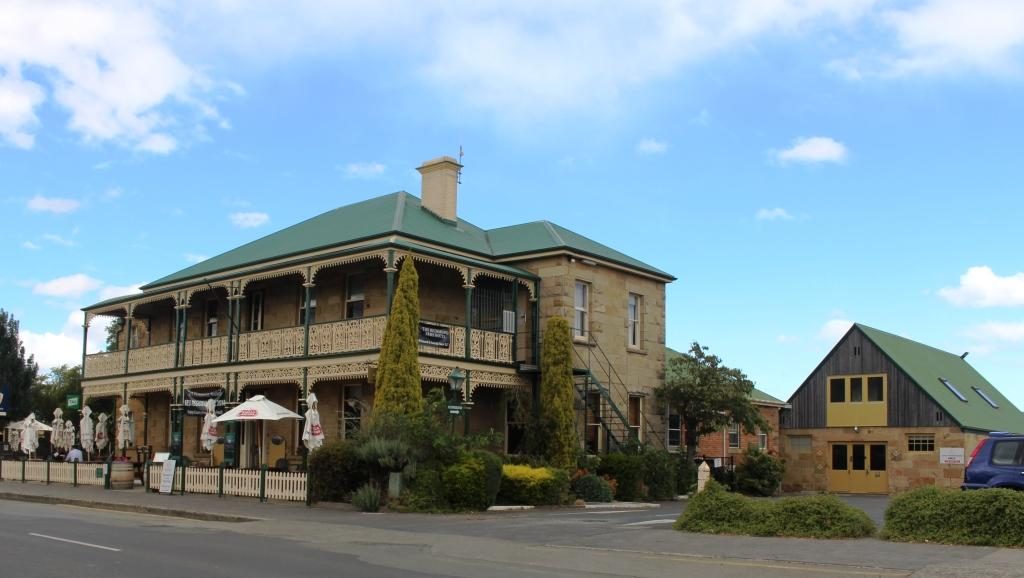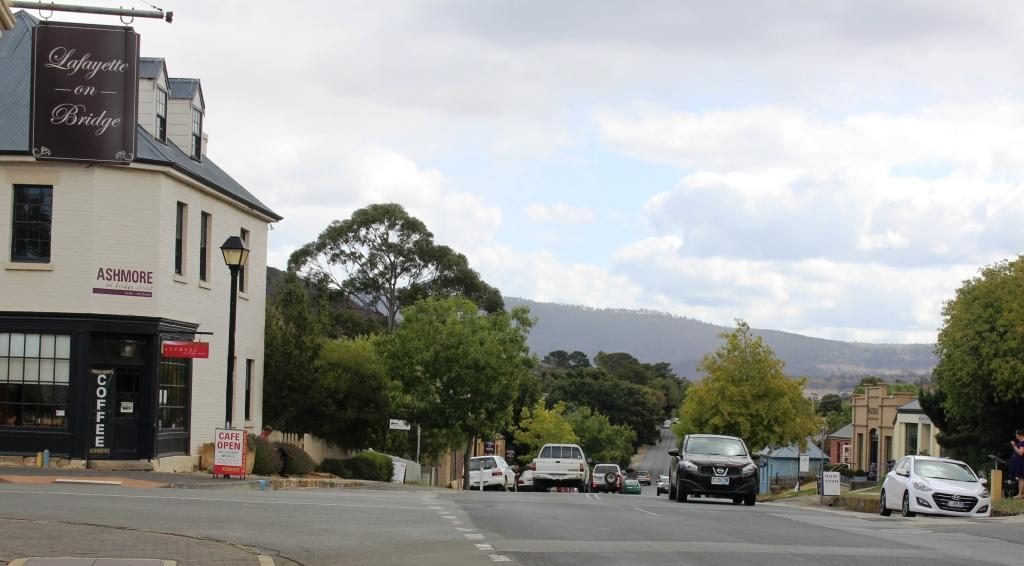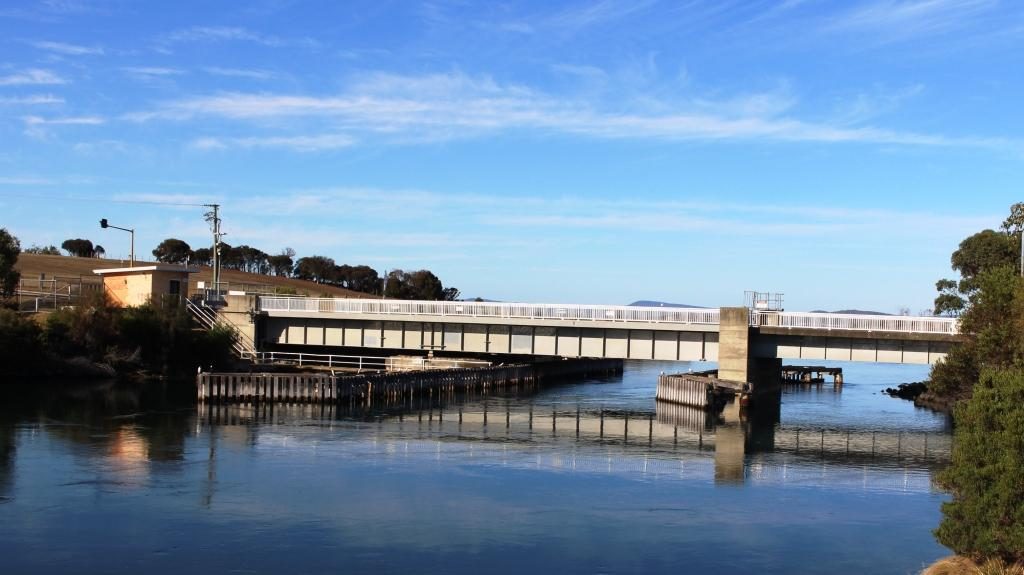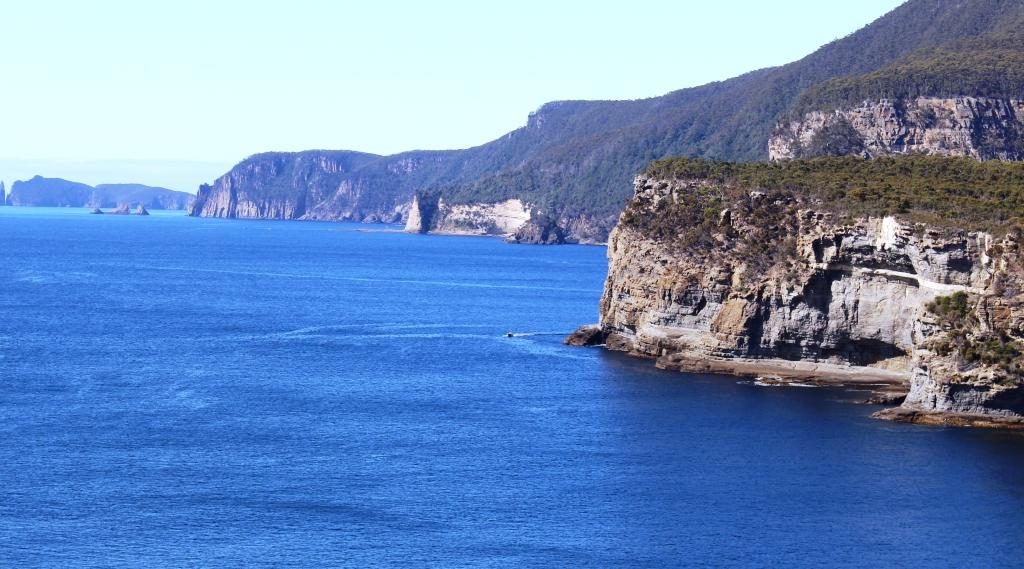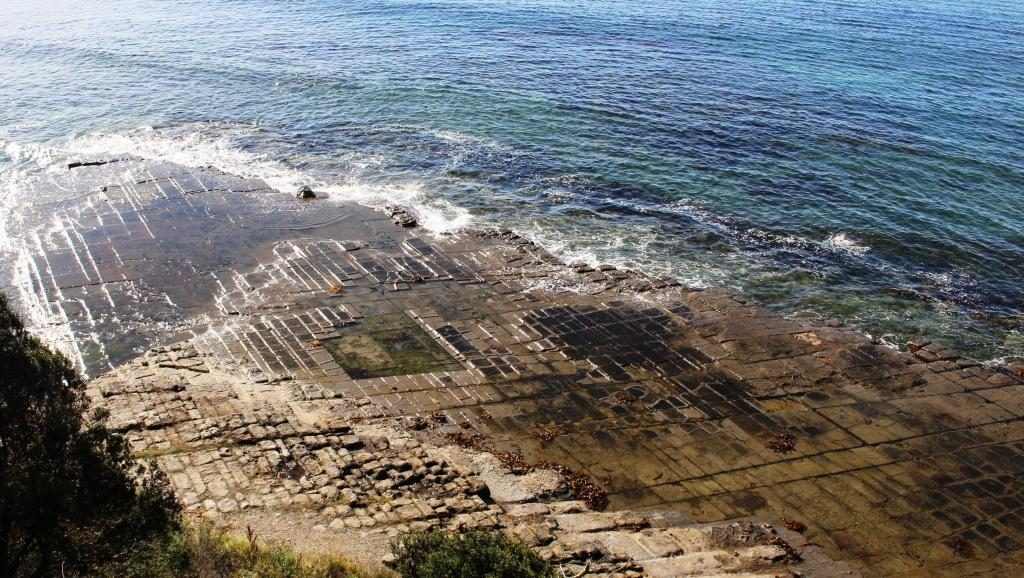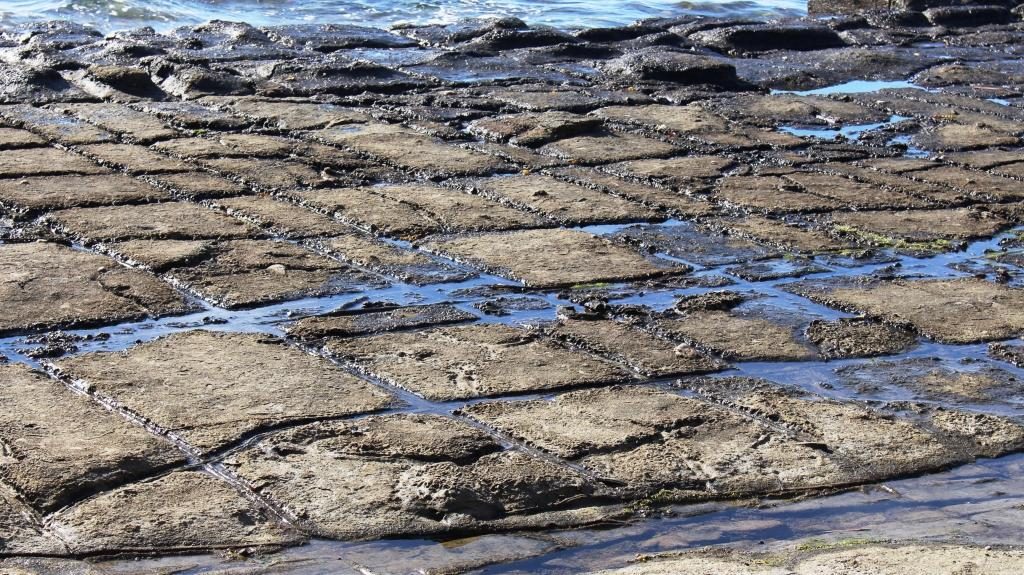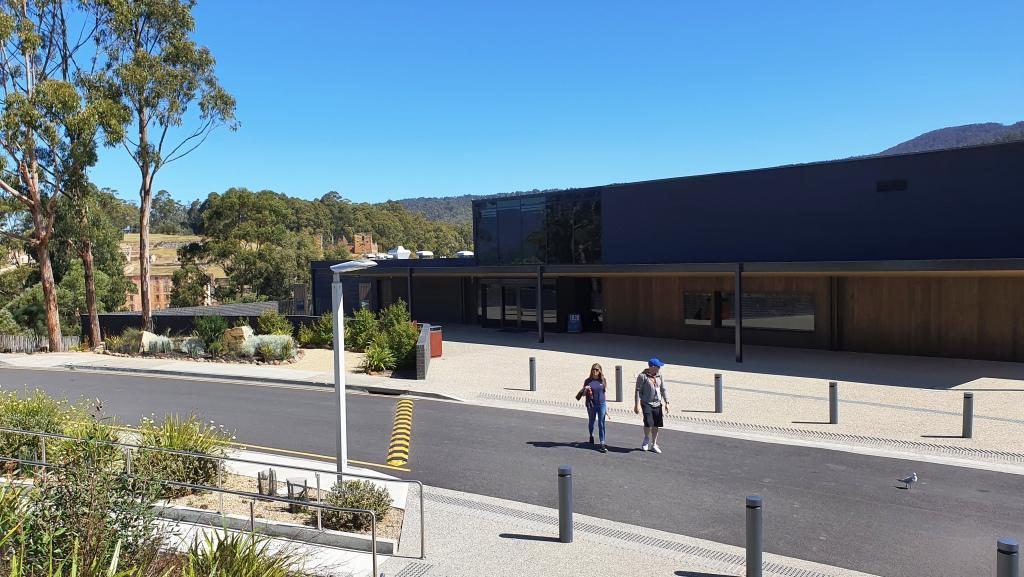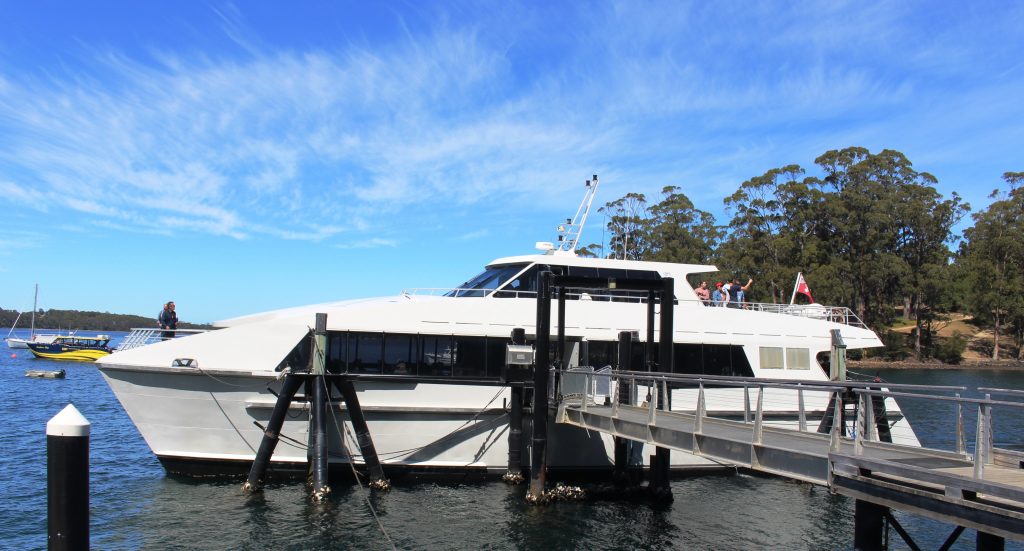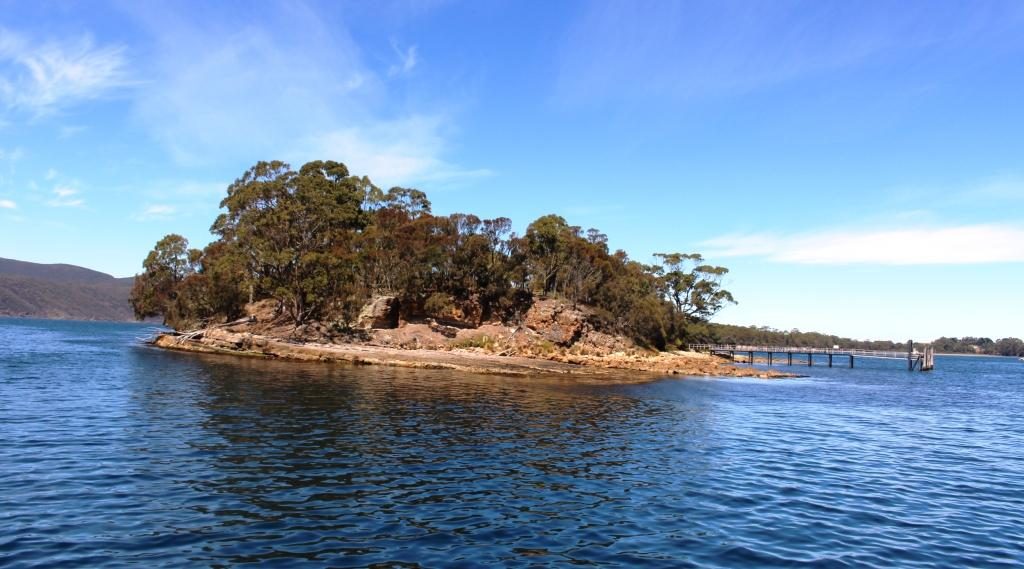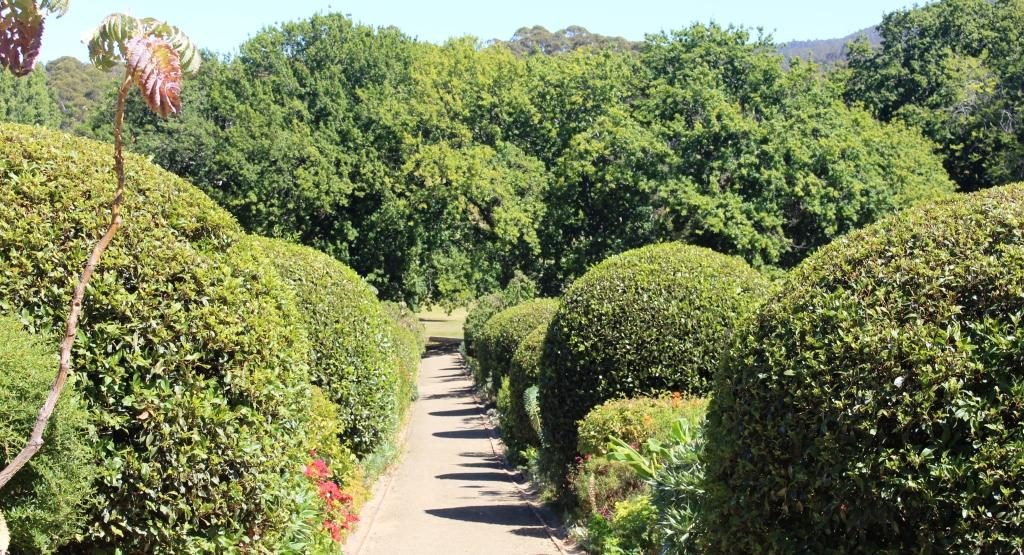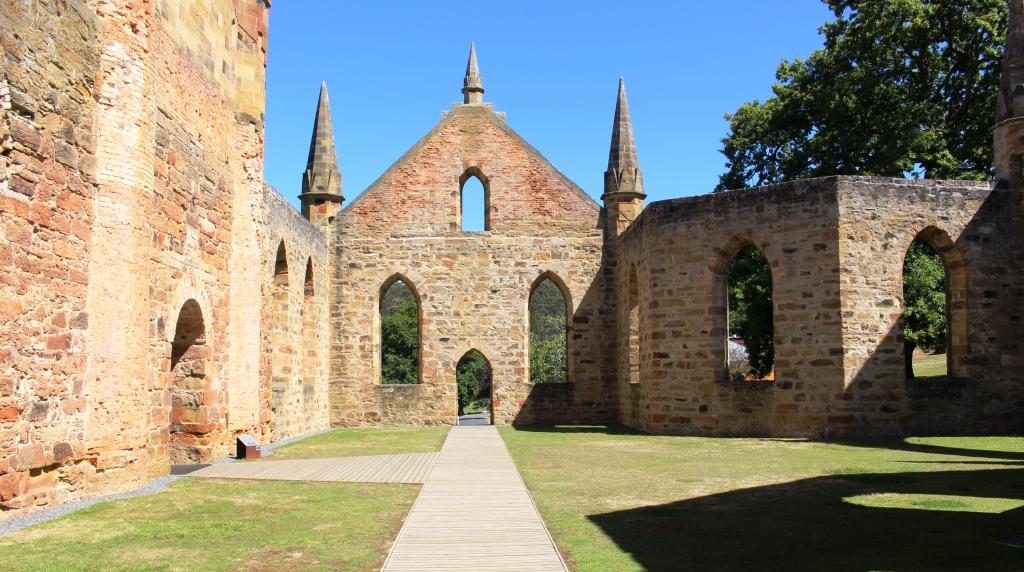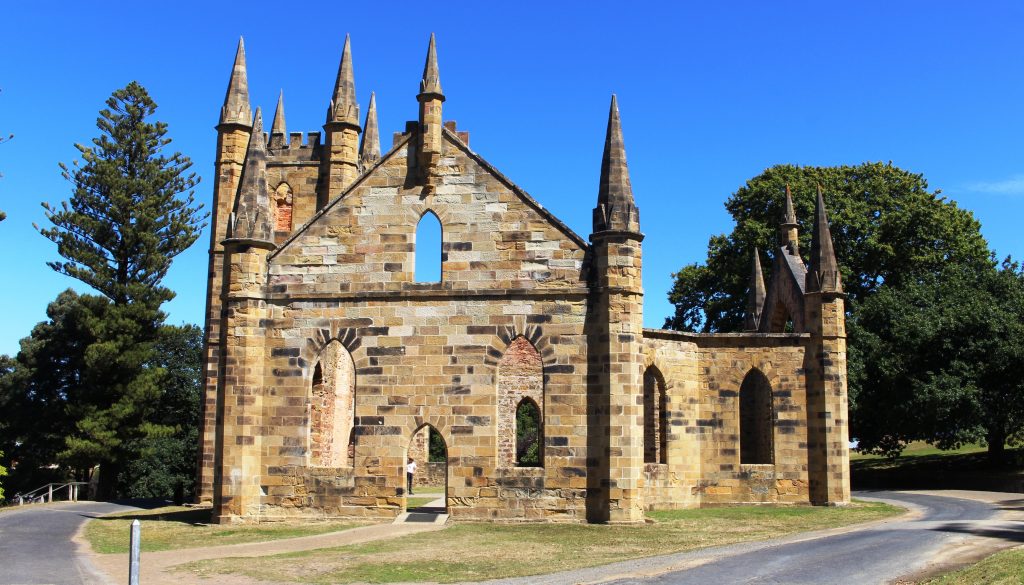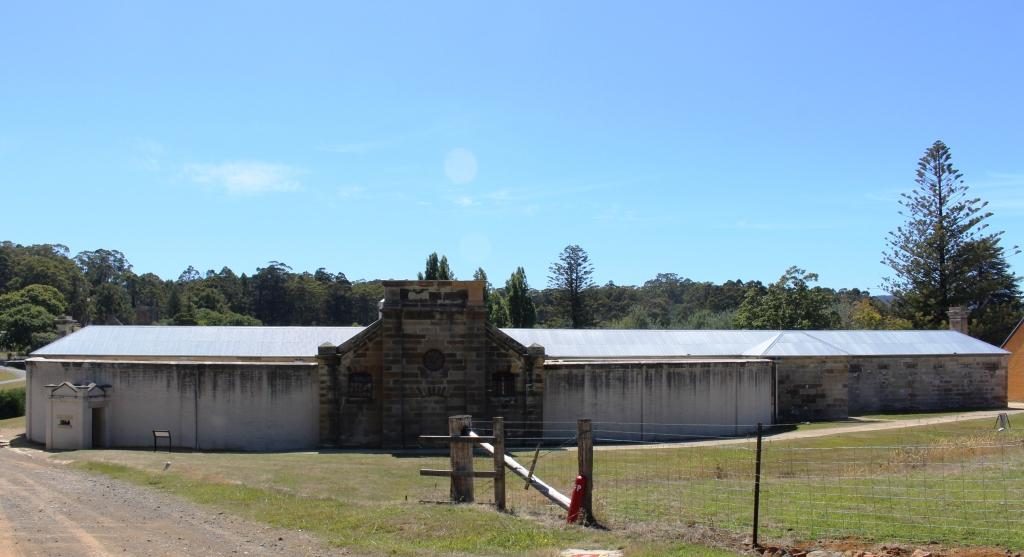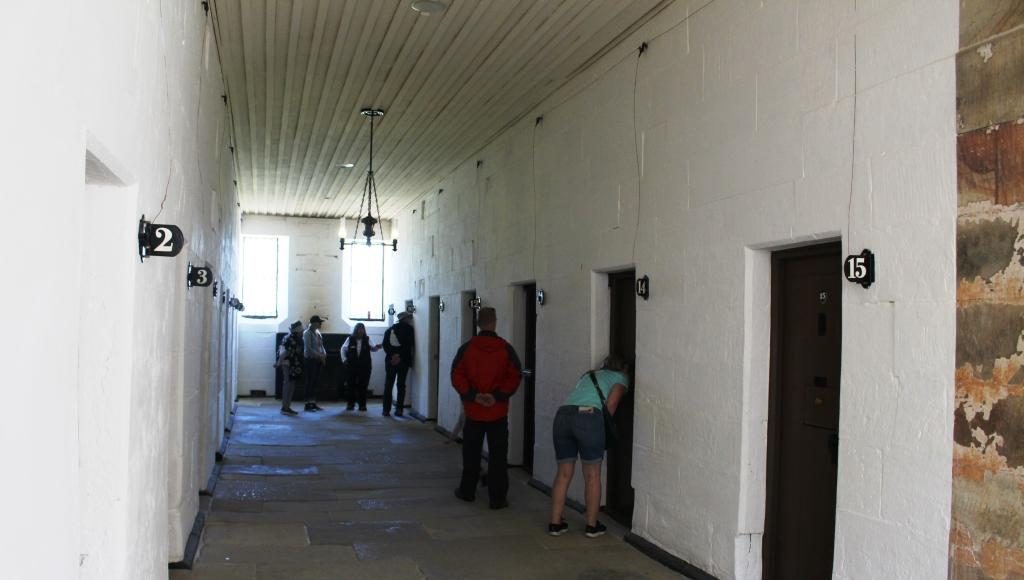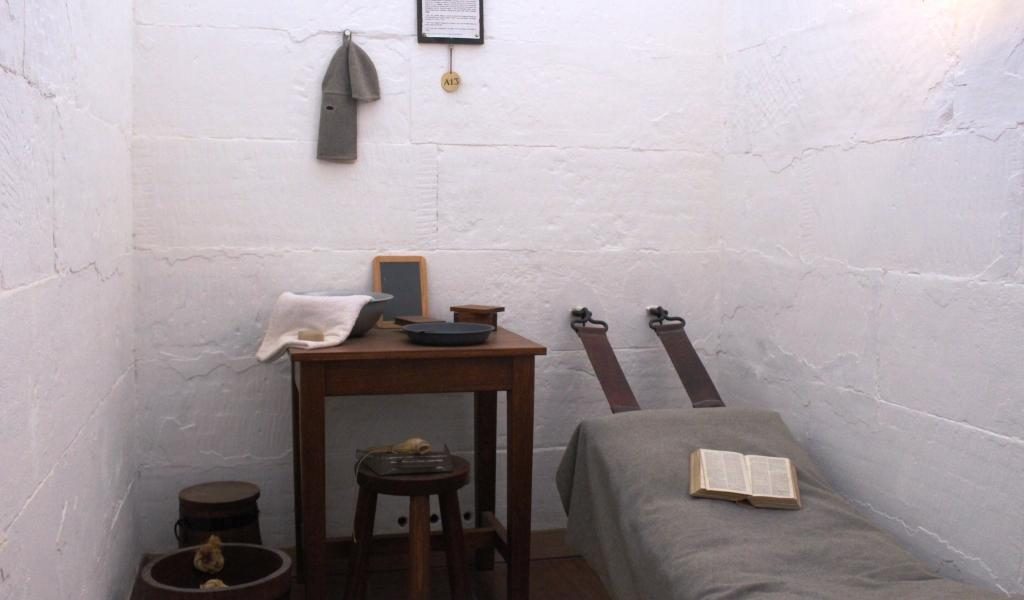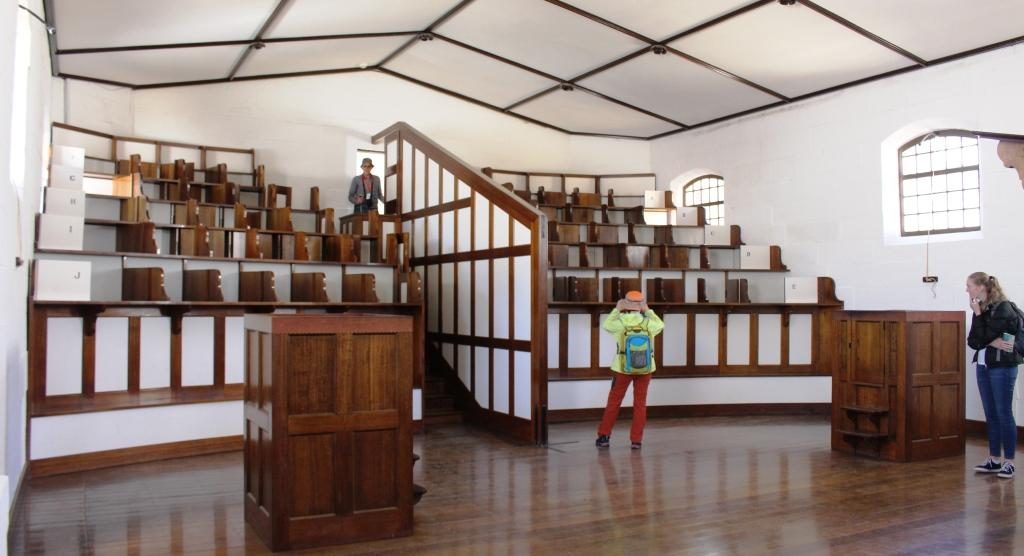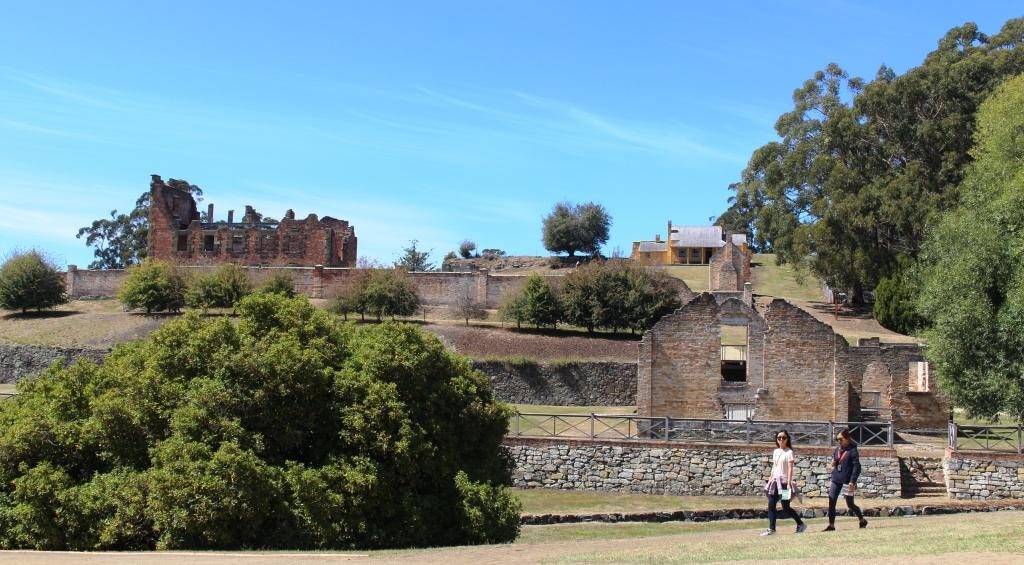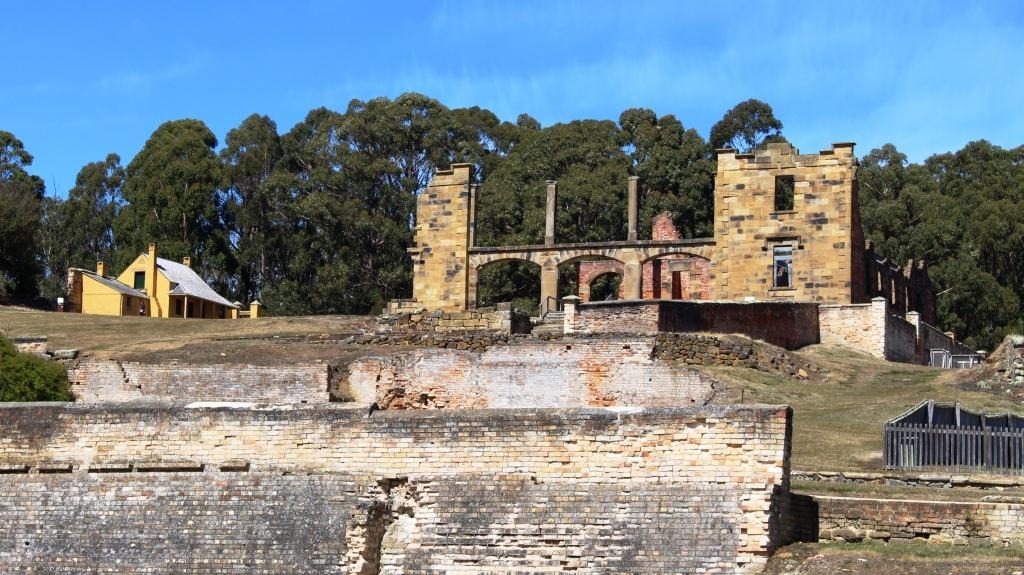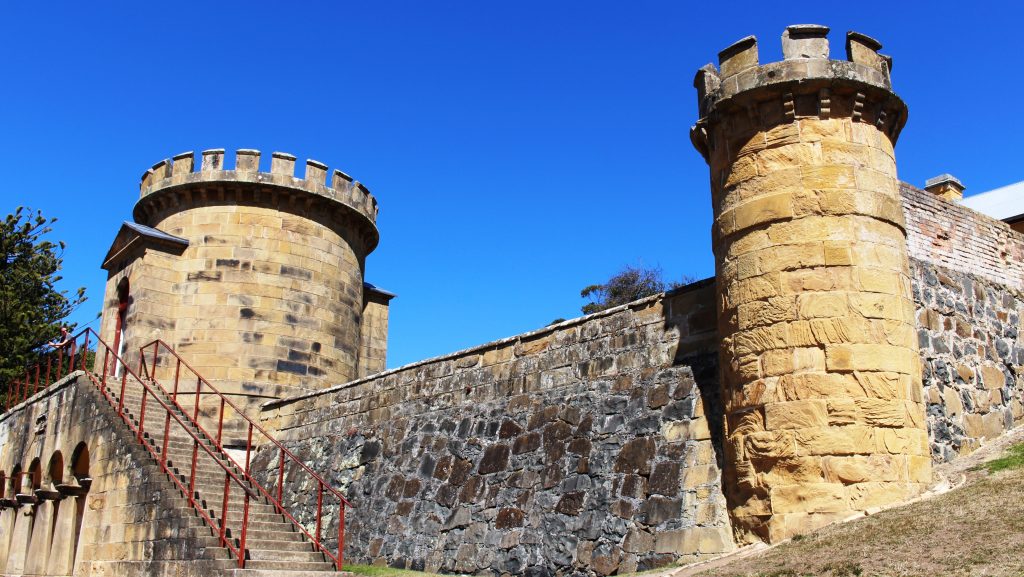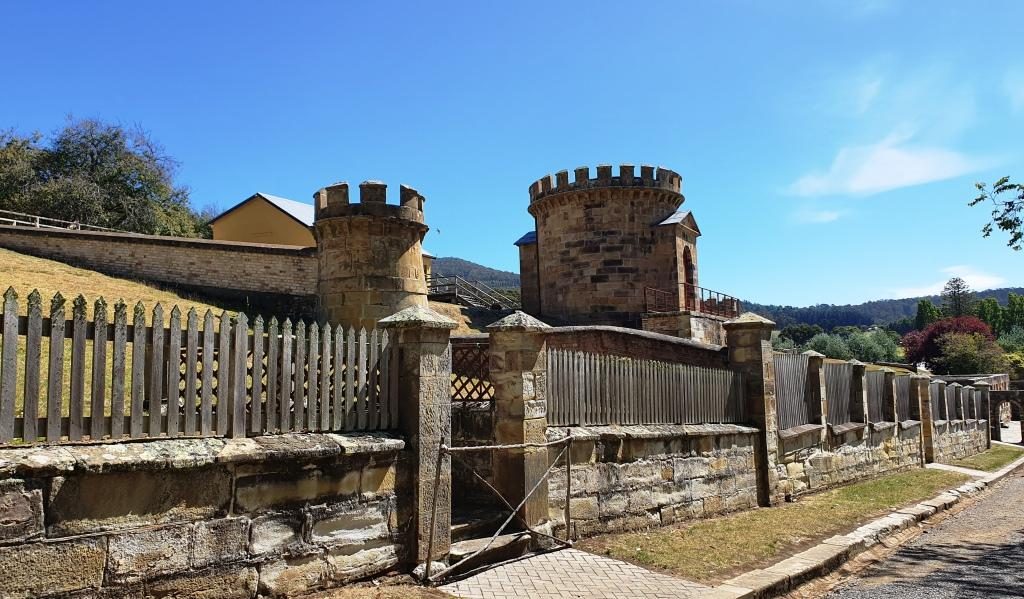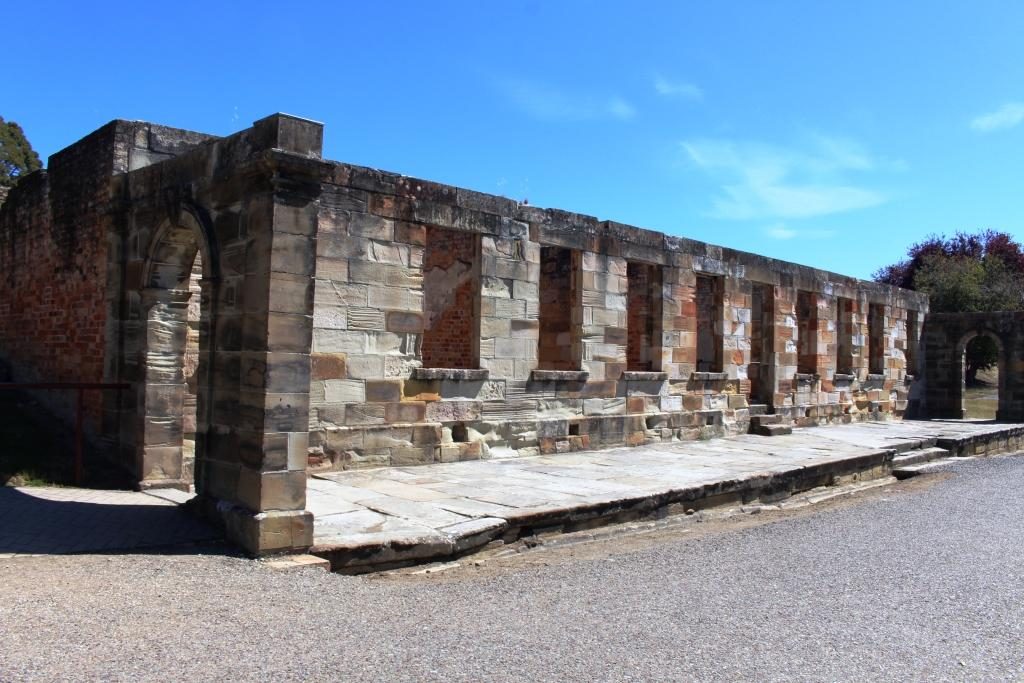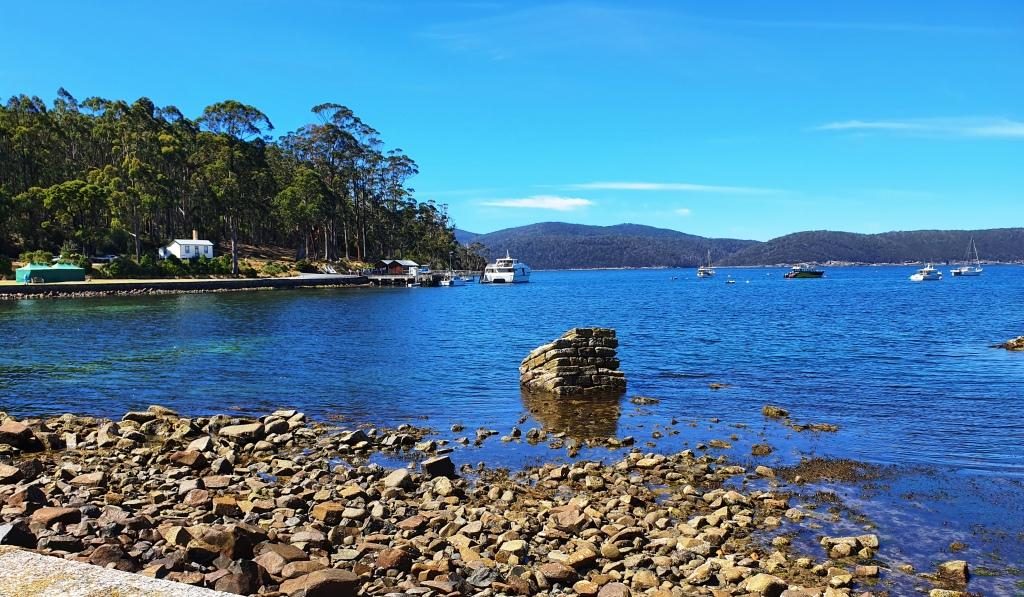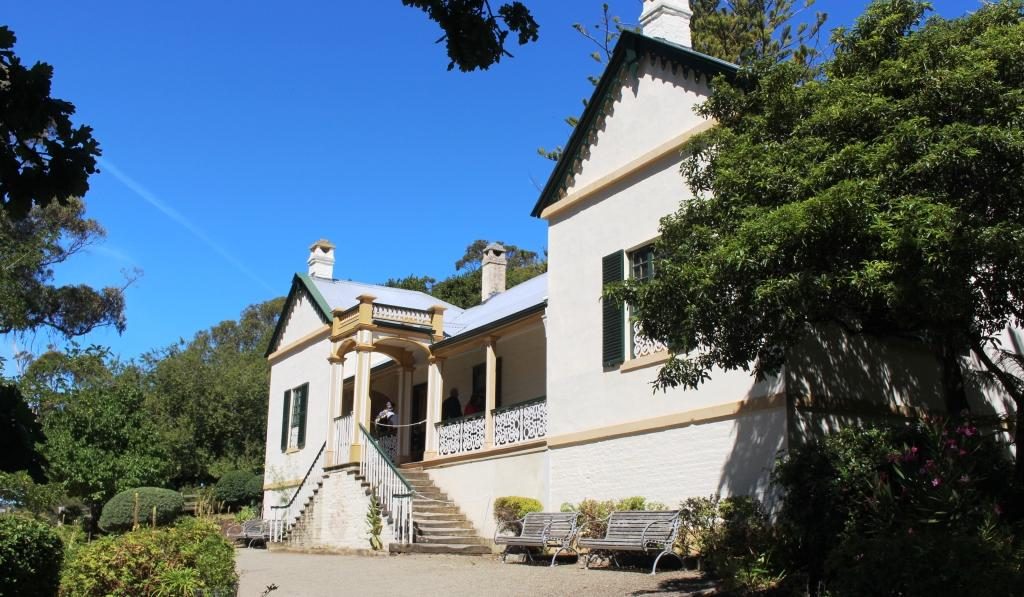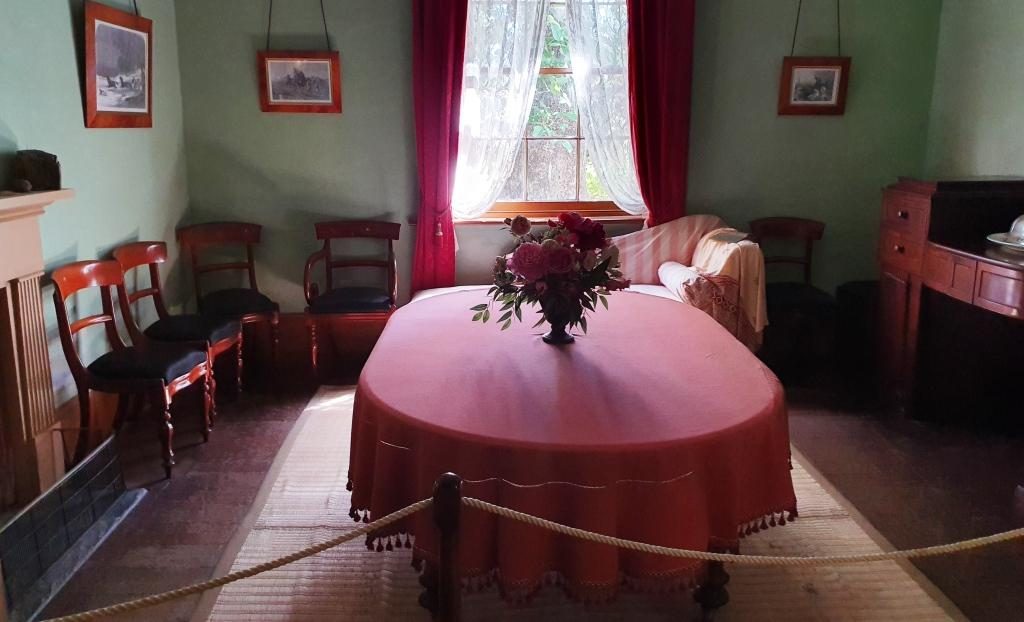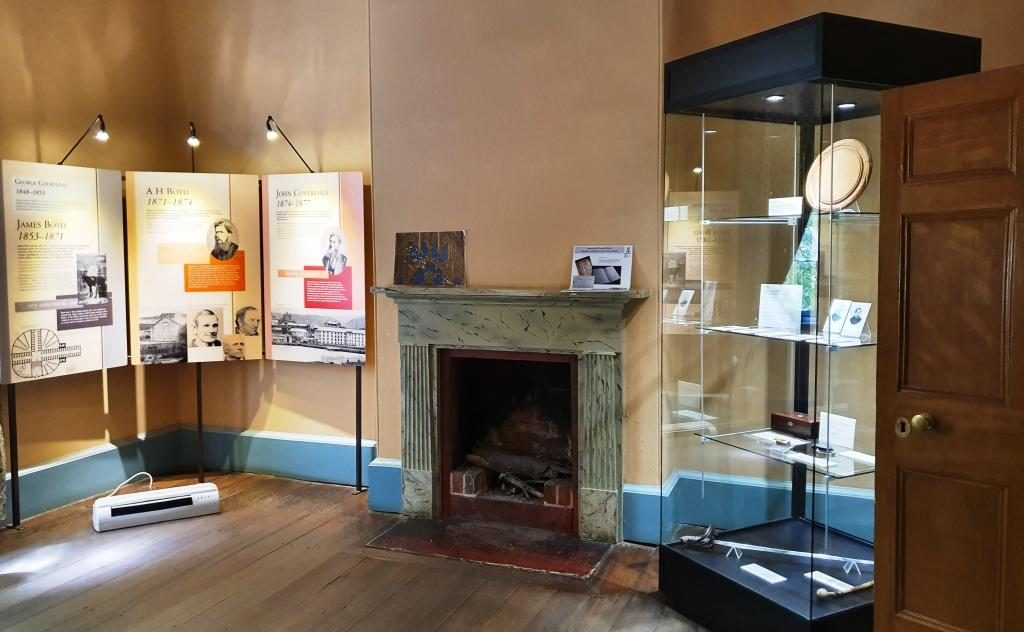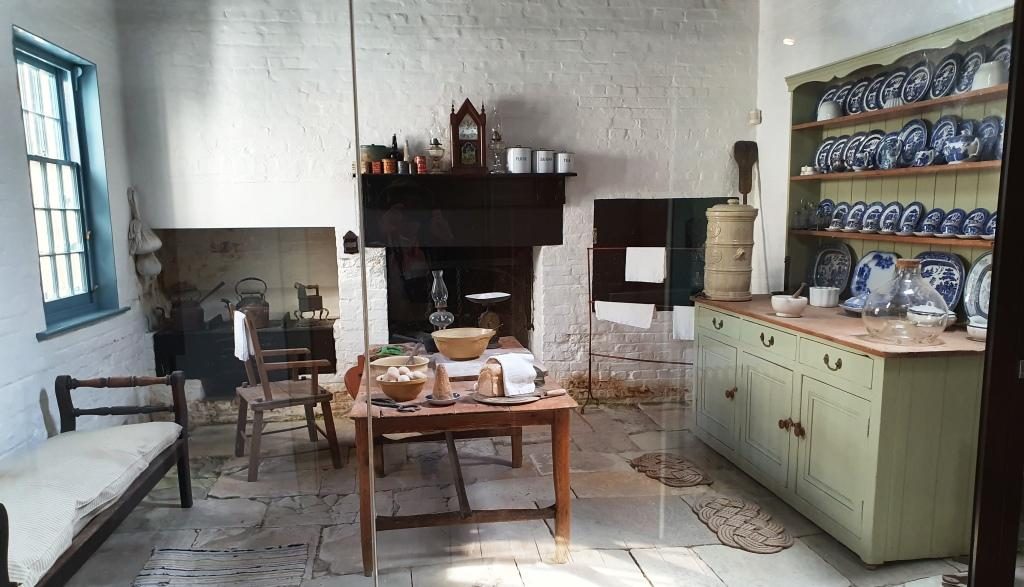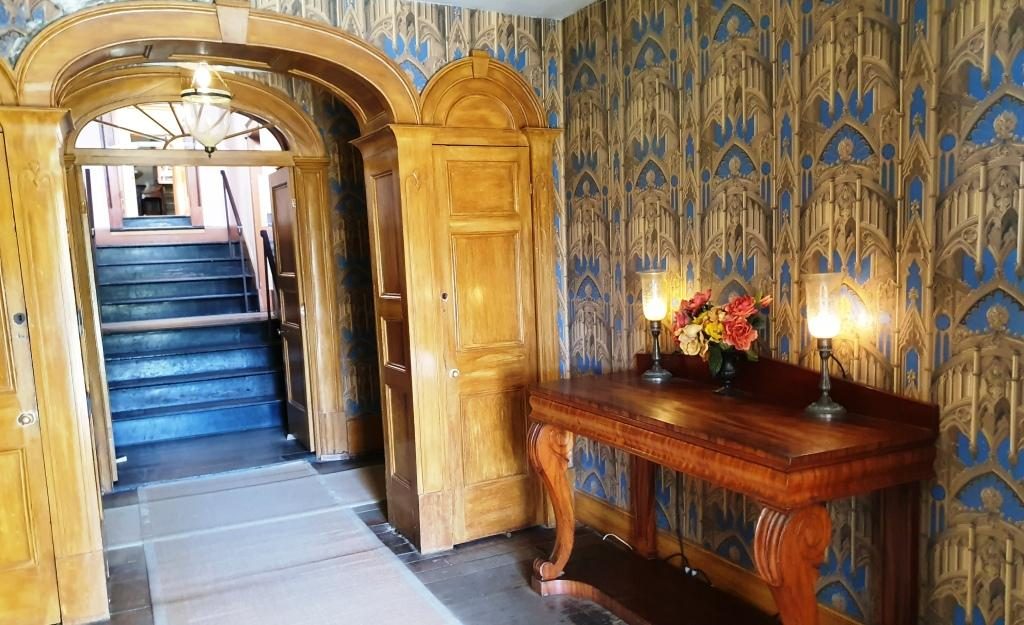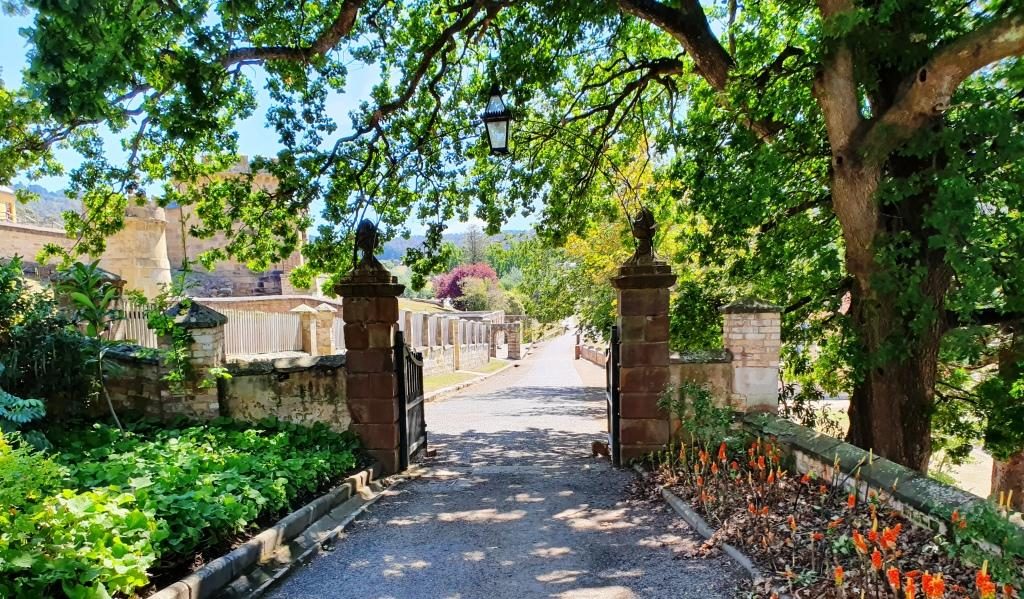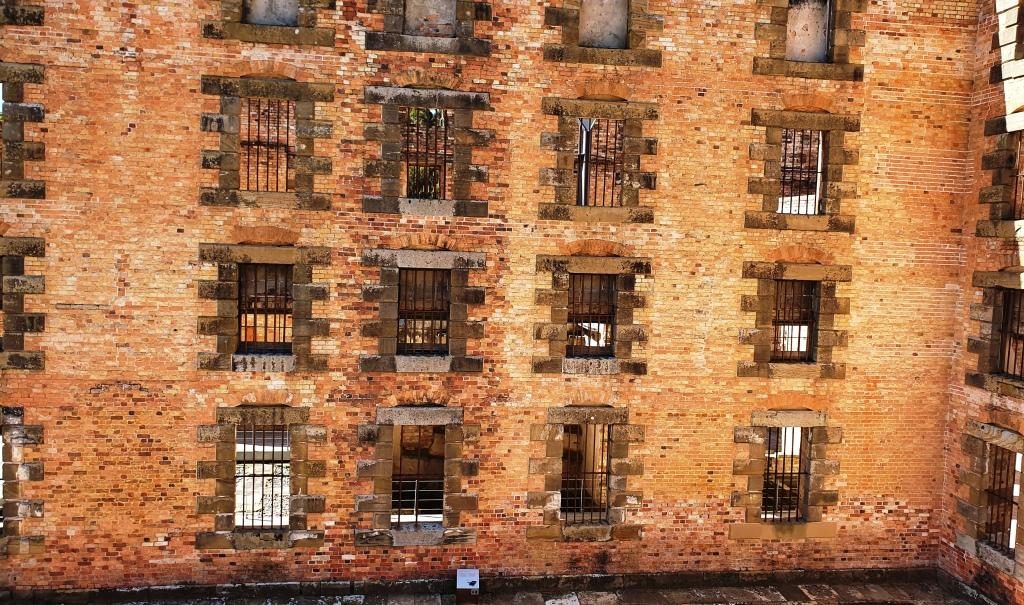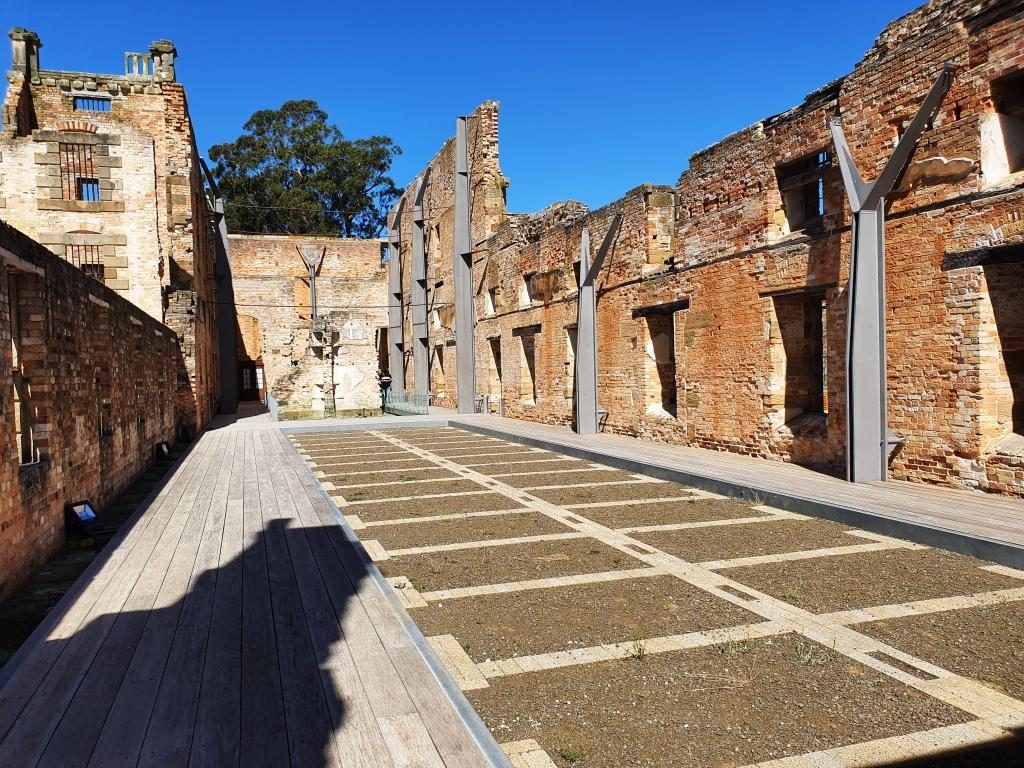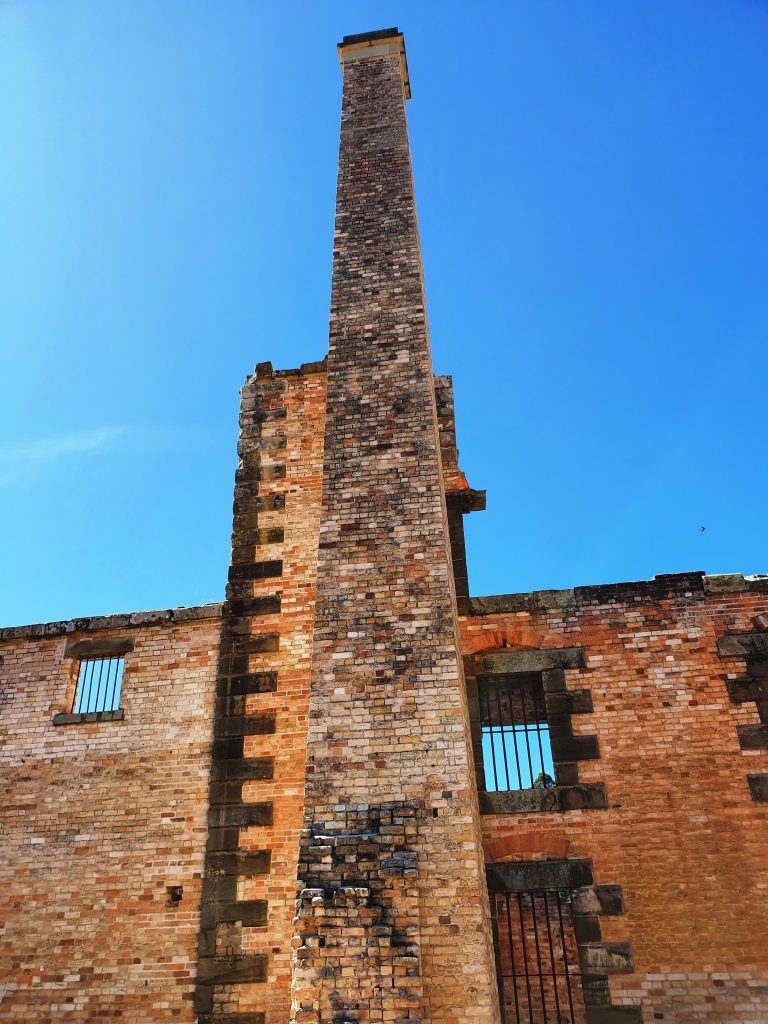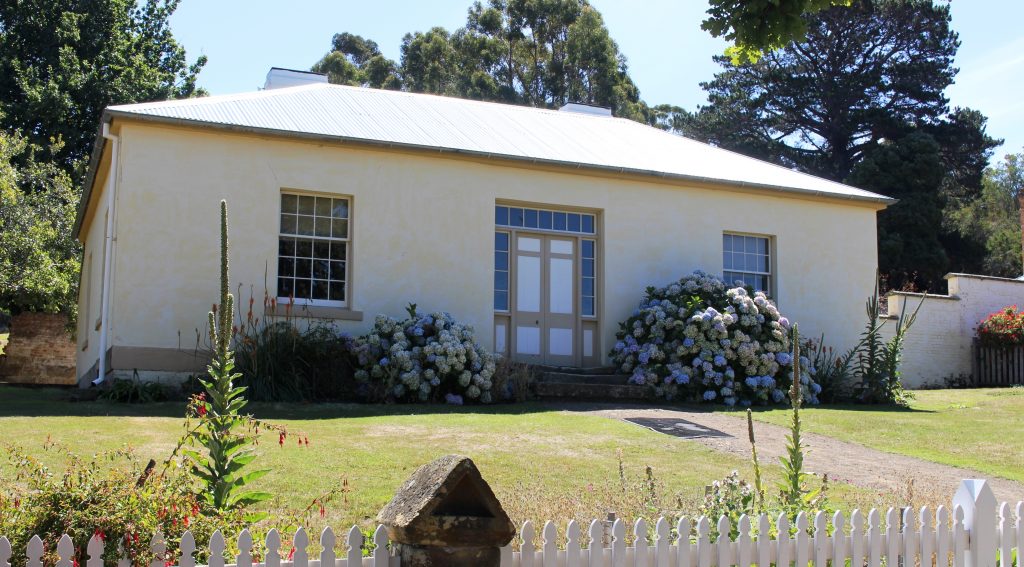28th & 29th February 2020
Please Note: Videos covering the material in this blog post can be found at the bottom of this post.
We were now down to our last two days in Tasmania. We had allocated Thursday 28th to the eastern side of the Tamar Valley and Friday 29th (Leap Year Day) to the west side and to make our way to Devonport to catch the Spirit of Tasmania back to Melbourne on Saturday 1st March.
So on Thursday morning we set off to visit the area to the north and north east of Launceston, starting by following the East Tamar Highway on the east side of the river, through Georgetown to Low Head, to see the historic maritime facilities at the mouth of the Tamar River.
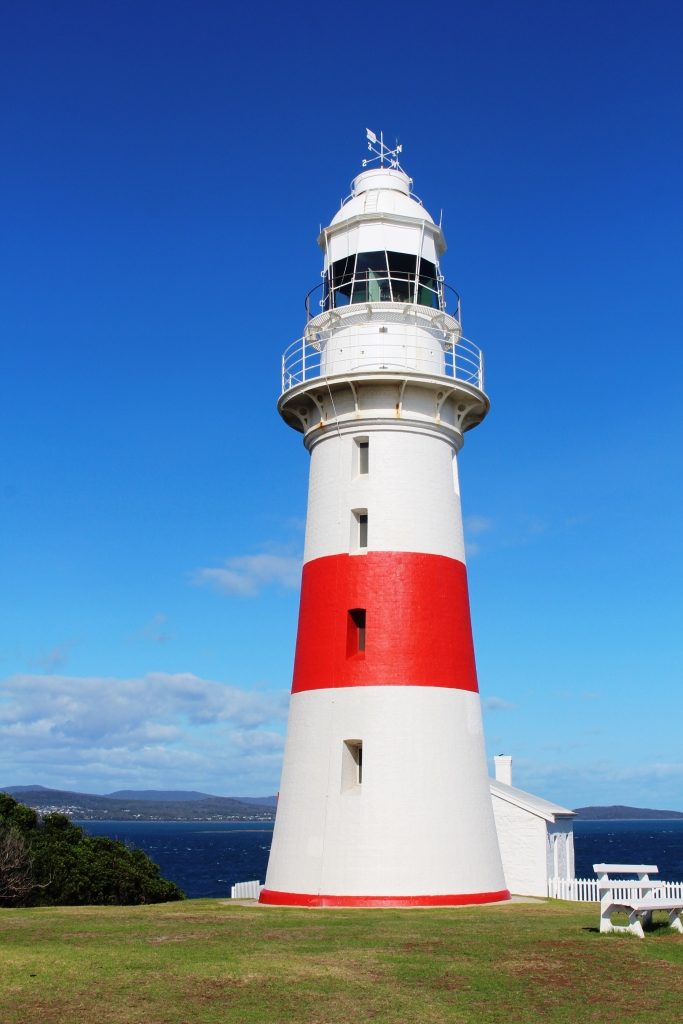
The Low Head lighthouse looks over Bass Strait and the river mouth. The area near the river is dotted with white painted brick houses with red roofs, with more modern and larger houses on the higher ground. These white houses were the homes of the many people needed to run the labour intensive services required in the early days when ships plied the Tamar River right up to Launceston. The original signal station still operates as does the pilot service. Bass Strait looked calm with the icy wind coming from the south west, but the sun was shining so it was pleasant in shelter.
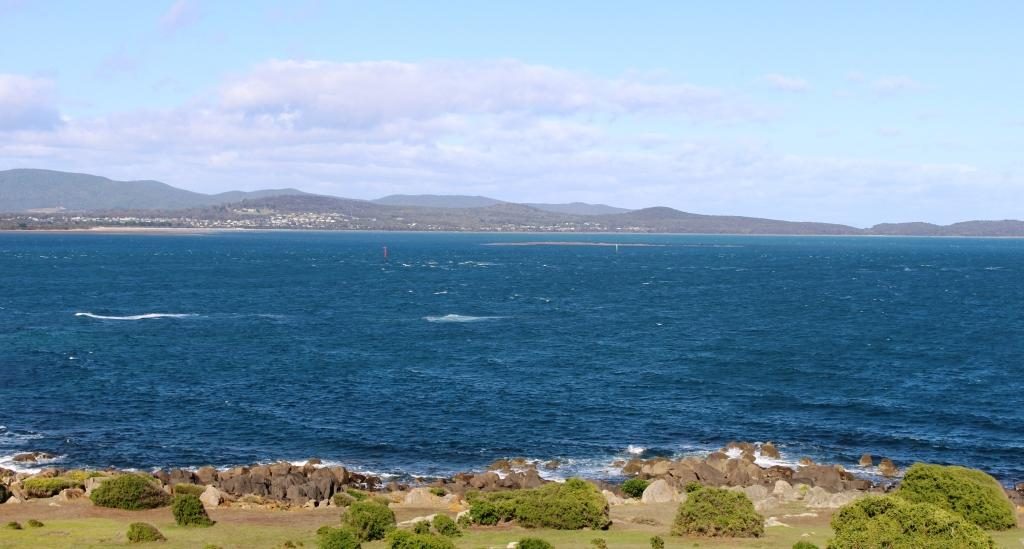
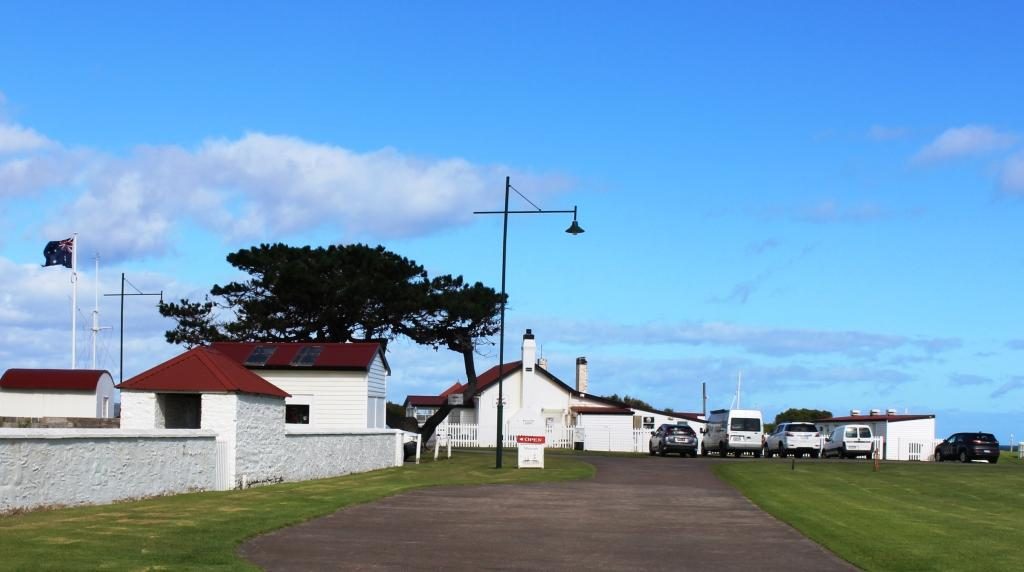
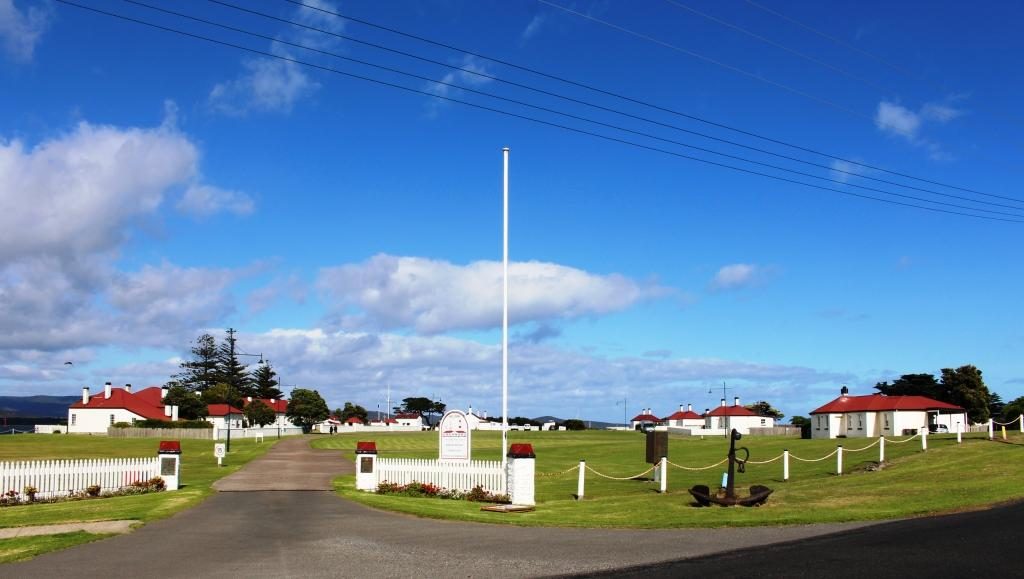
We returned to George Town, but history there is not recorded in the continuing use of old buildings. Driving through, it looked like most country towns. The town is built on an inlet from the river called Stone Quarry Bay.

When we drove around to the other side and looked across, older houses were visible that we could not see from the main street and we had a better view of the town centre. A substantial and modern resort, the York Cove Holiday Hotel, on the south bank of the inlet, didn’t look very busy but we did see a house maid trundling her trolley between buildings.
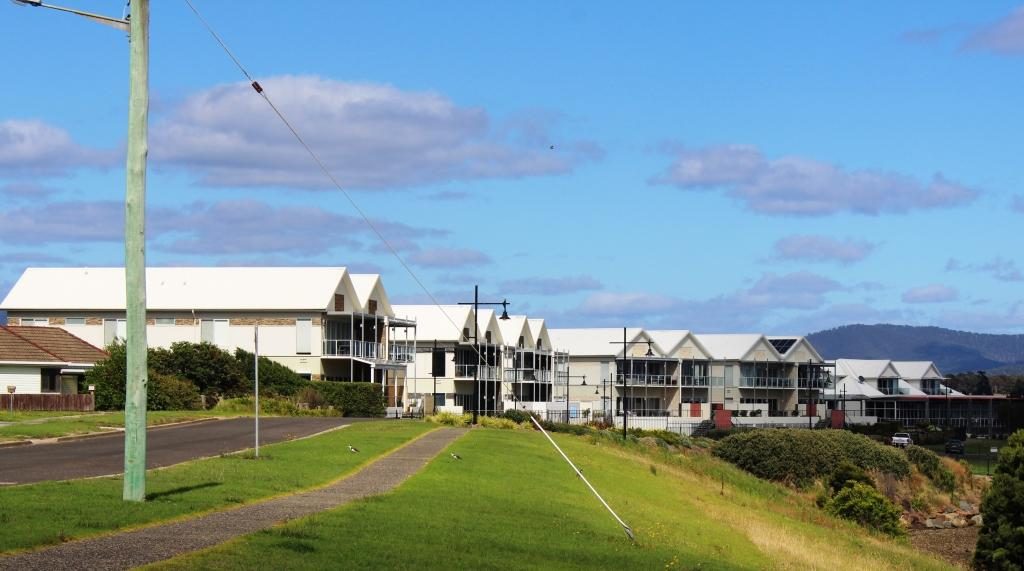
Bell Bay is only a short distance south of George Town. It is an important industrial port with an aluminum refinery, a ferromanganese plant and a port for handling cargo. It replaced the old docks in Launceston for handling of freight for this part of Tasmania many years ago.
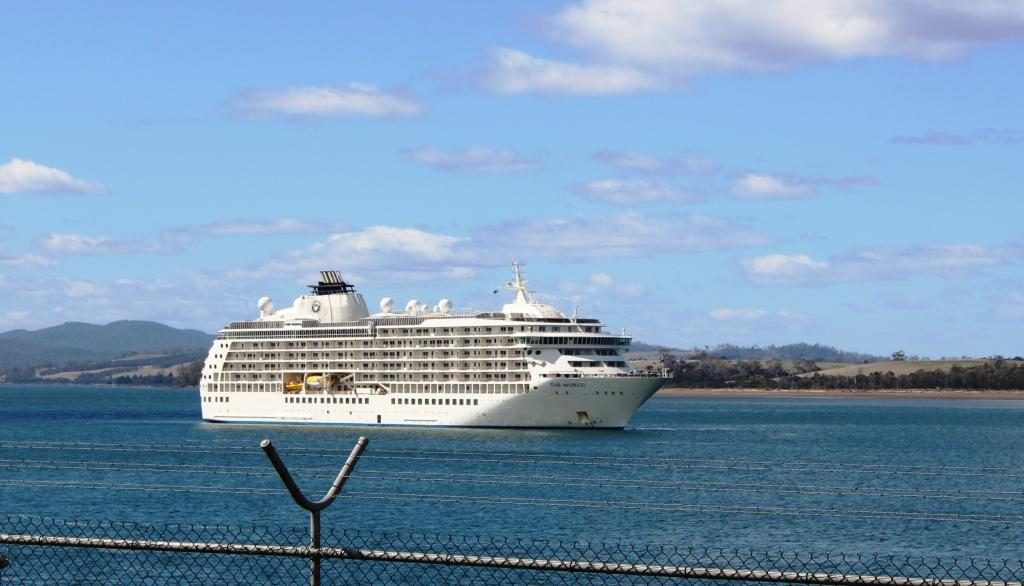
Upstream from the port a large white ship was at anchor. We took it to be a cruise ship visiting Launceston at first but a closer look through binoculars showed it to be passenger vessel named “The World” but with no cruise line identification. A Google search informed that it is the largest private yacht in the world. It is a floating block of apartments owned by permanent residents and wealthy folk who take their holidays aboard and rent their apartments when absent. It pulls up for several days at a time at various ports. It cost $13.5 million to buy into the scheme initially, so it is not for your every day battler.
We moved on towards Bridport via the north Tasmanian wine trail. We saw hillsides covered in lush green vines but mostly producing cool climate white wines. The heavier end of the red wine range seems scarce in Tasmania. Pinot Noir is as serious as wine production gets. The weather is probably too cold. If you are looking for a Cab Sav or a Shiraz don’t bother with Tasmania.
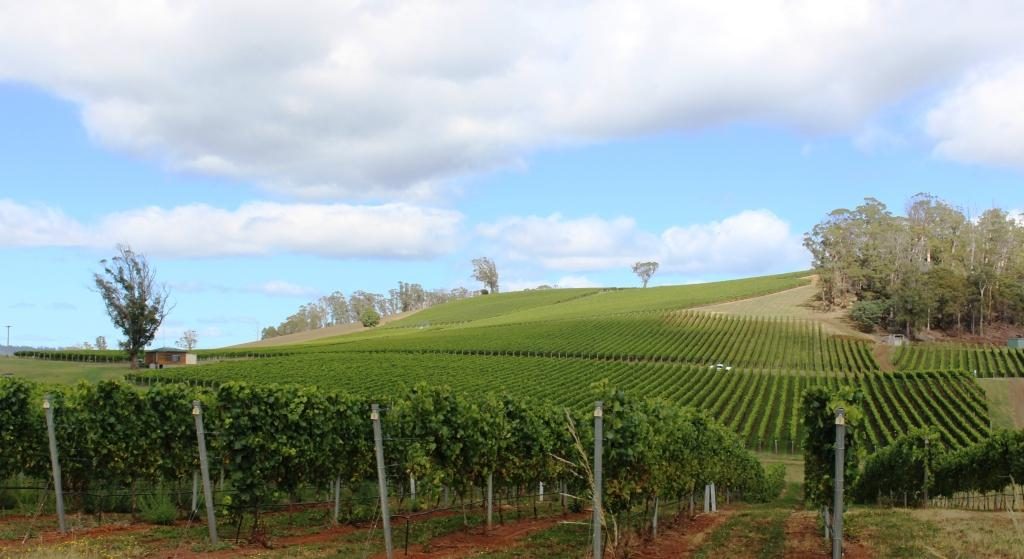
Pipers Brook is a well known brand of white wines. The winery is near to the road so we called in. The entrance driveway passes through a couple of kilometres of vineyards, making it a pleasant drive, but you do start to wonder when you will arrive. There is a cellar door and restaurant. We went in, but I don’t taste when driving and Ruth seldom does, so we had a look at some historical artefacts and then moved on. Winery restaurants are for more leisurely dining than we had in mind for that day.
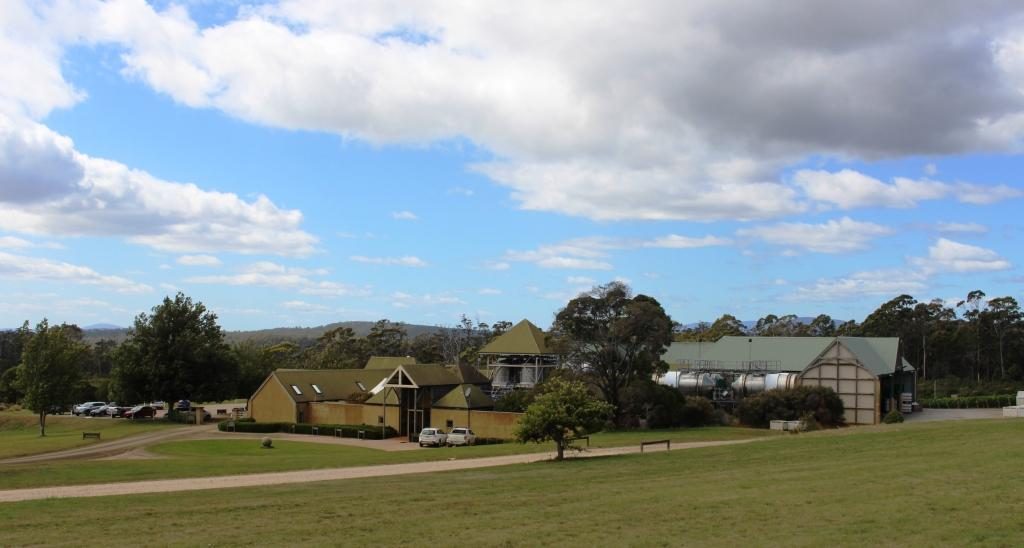
Located quite near to Pipers Brook is Clover Hill Wines. They specialise in sparkling wines produced by traditional methods. The cellar door building was quite new, very modern and attractive in the vineyard setting.
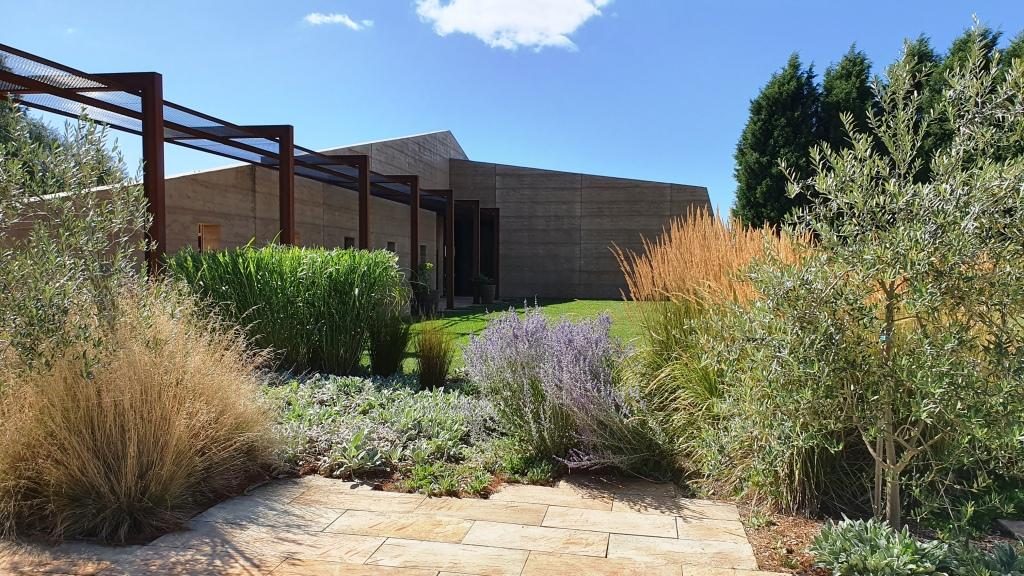
A sign near the buildings advised that if you were to dig through the earth from that spot that you would come up near the champagne area of France. I had always heard that you would come up in China. But France does sound a better proposition right now.
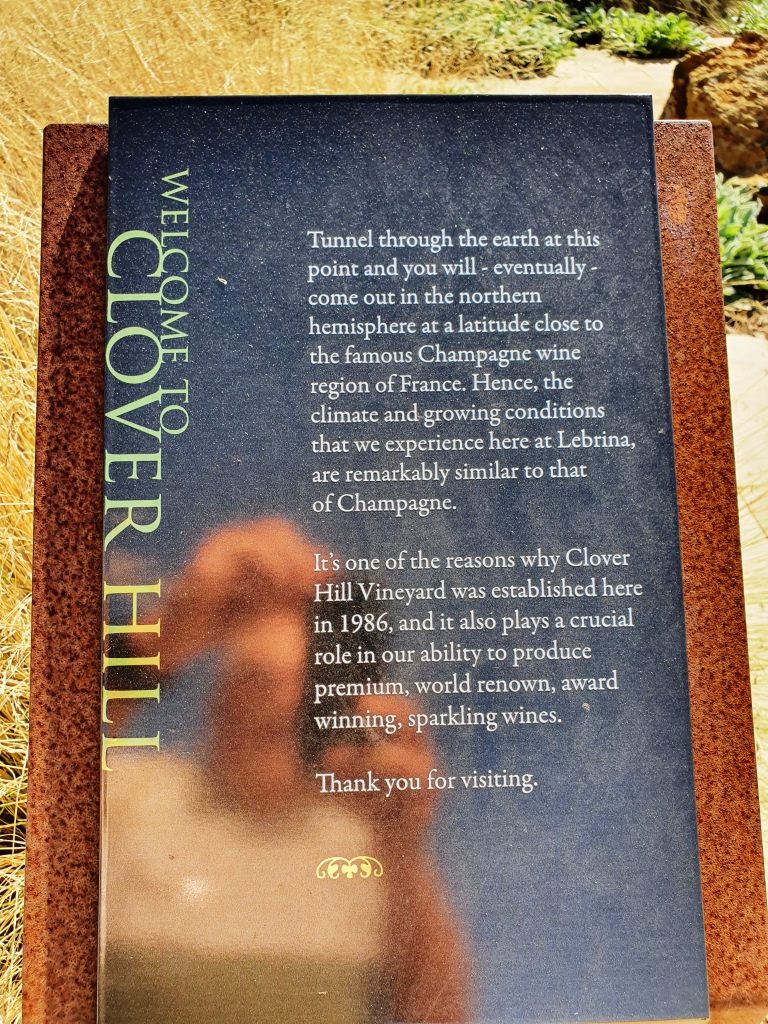
Bridport commands views over Bass Strait and is a pleasant town and is the principle beach side town on the eastern part of the north coast. We found a pleasant cafe that commanded those same views over Bass Strait and with seafood chowder on the menu. Well, what else could we do but go in and order? Ruth settled for fish. Our tastes in food often differ.
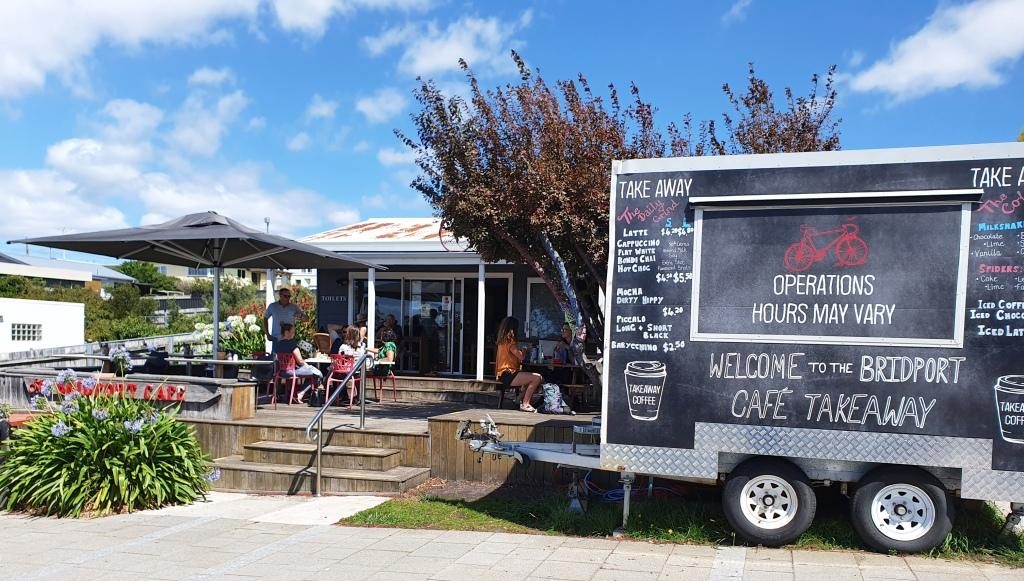
About 20 km south brought us to Scottsdale, the last major town through which we passed coming over from the east coast a couple of days before. This time we took an alternative road to Launceston that avoided the worst of mountain range. Scottsdale is 62 km from Launceston via the Tasman Highway (over the mountains) and 68 km via Lillydale. It is a substantial town and has a Woolworth’s anchored shopping mall as well as the kind of businesses that support agricultural production.
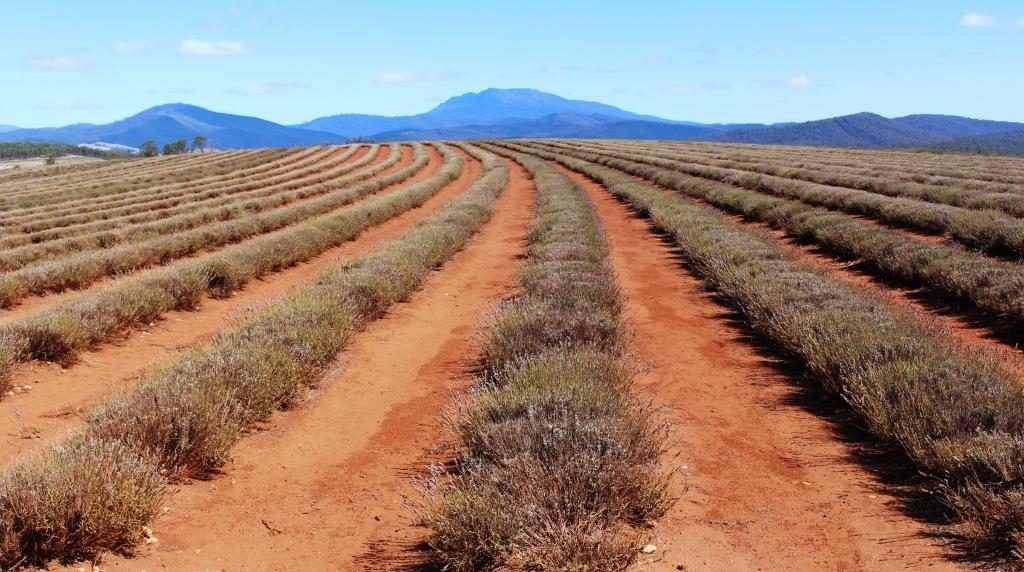
The road through Lillydale brought us near to what is, I think, Australia’s largest lavender farm. Bridestowe Lavender Farm grows lavender which is converted to a wide range of products sold in the farm’s retail outlet.
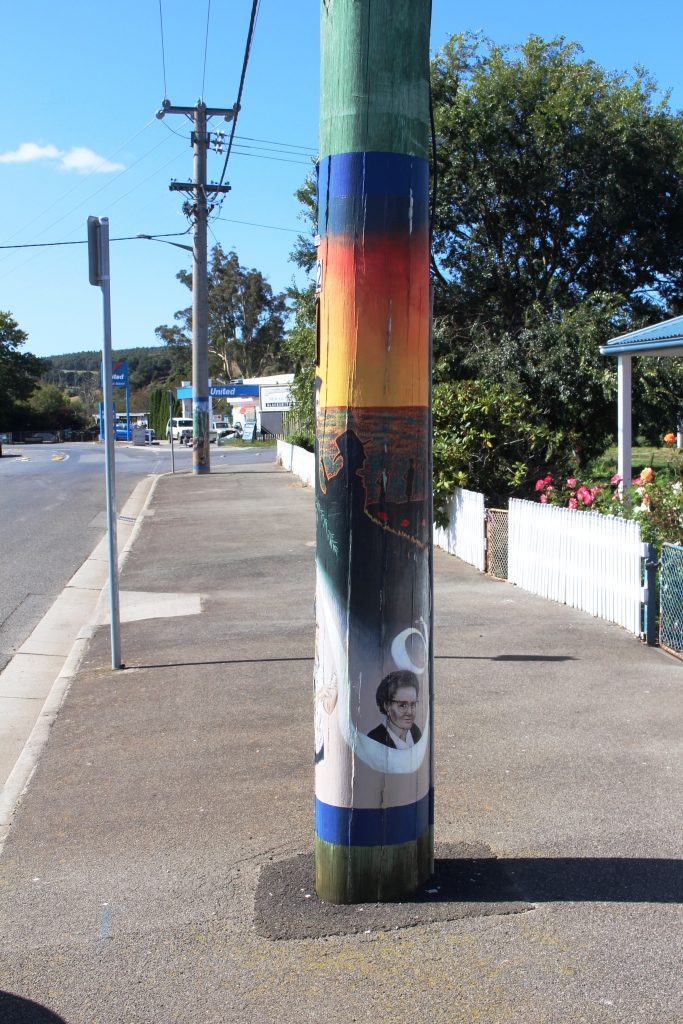
Later we drove through Lillydale, a town that has attracted artists to take up residence. As a community project, locals have assisted a number of the now local artists to paint murals on the electric power poles. Consequently Lillydale is known as The Town of the Painted Poles. It is about 28 km from Launceston.
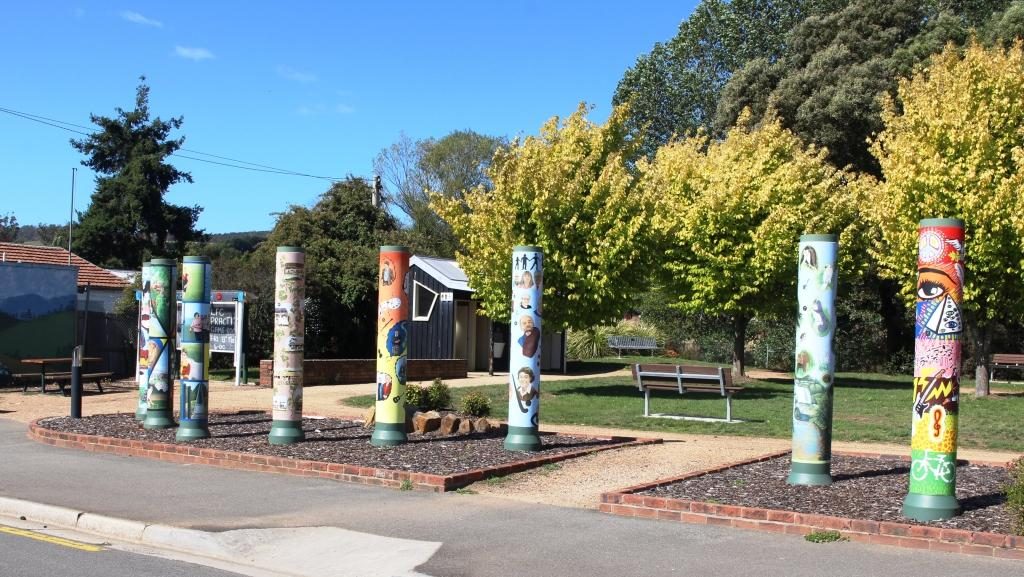
We checked the time and decided that we would try for seats on the last Tamar River cruise for the day, if seats were available. We would have made it except for Launceston’s peak hour. I didn’t know it had one but we were held up for about 20 minutes as traffic made its way from north to south through the city. We returned to our unit for another quiet night.
The following morning we packed and loaded the car. As I sat in the seat to drive I noticed a slip of paper under the wiper blade. When I retrieved it I found that it was a note from the old neighbours who we had met on Bruny Island. They had spent the previous night under the same roof as we had.
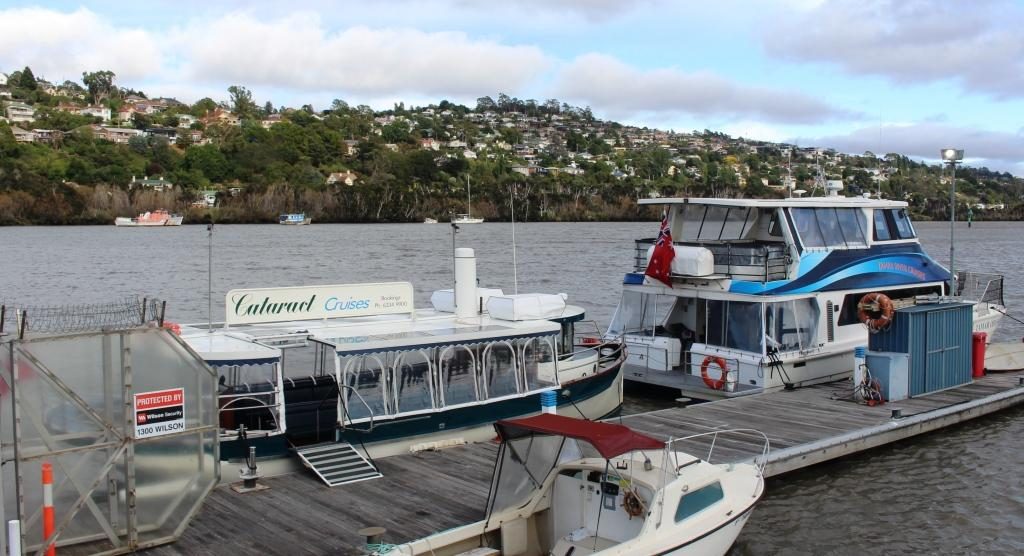
Before we set off to explore the west side of the Tamar we gave the Cataract cruise another try. We were successful and got tickets for the first cruise.

The opportunity to see Launceston and the Cataract Gorge from the water was better than the commentary from the expatriate Kiwi skipper, but he did add some interesting information. The day was sunny but with the same persistent cold wind that has apparently been blowing all summer. The see through blinds on the cruise boat were kept down.
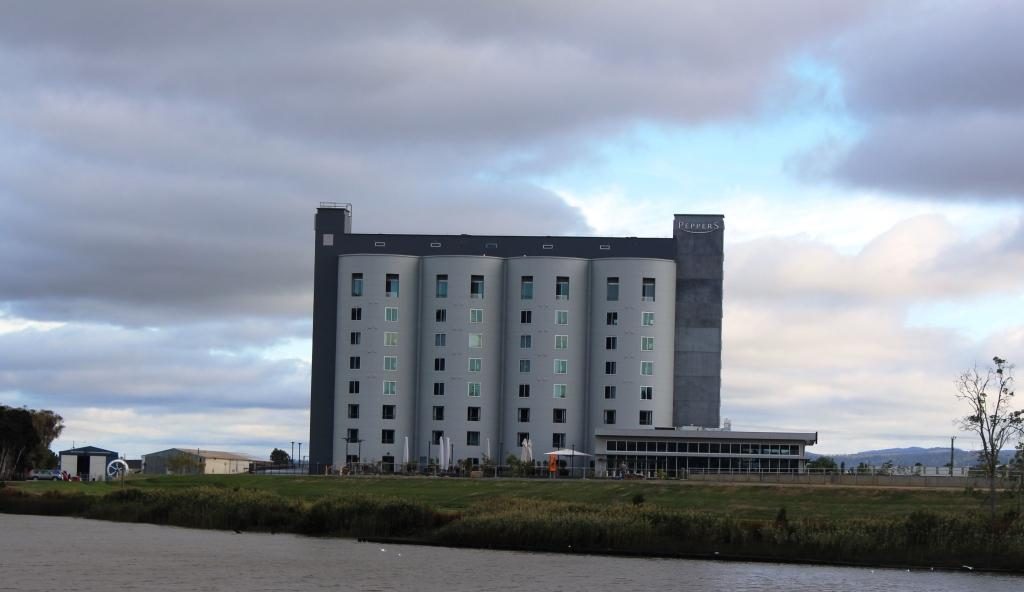
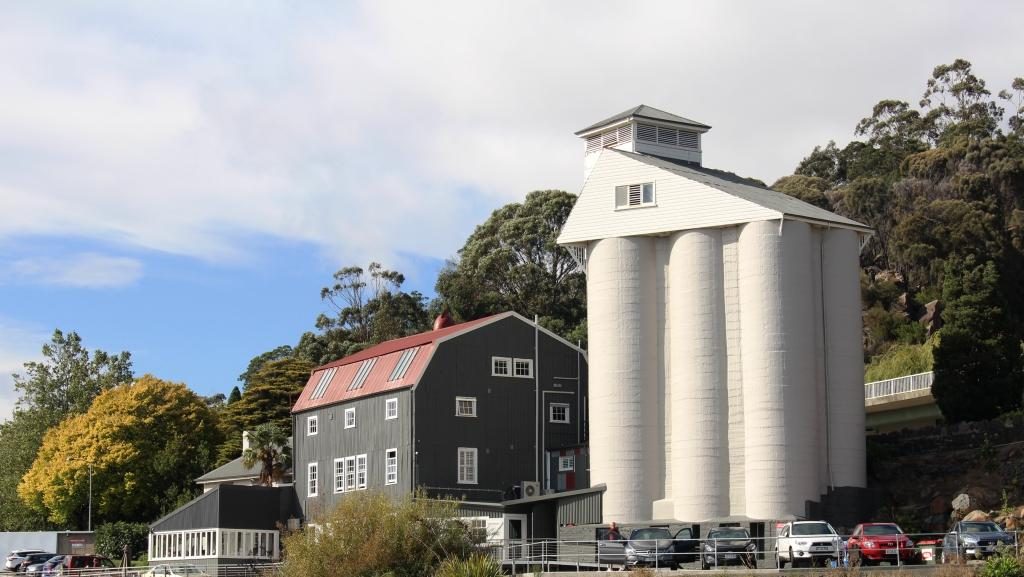
There has been a great deal of development of the old Launceston river waterfront with extensive walking and bike ways that run between the river and modern unit developments. Open space has not been forgotten. The development has provided for public access to the river bank. The development includes new hotels like the Pepper’s hotel developed in a set of four grain silos over the North Esk River mouth, directly opposite the tour boat wharf.
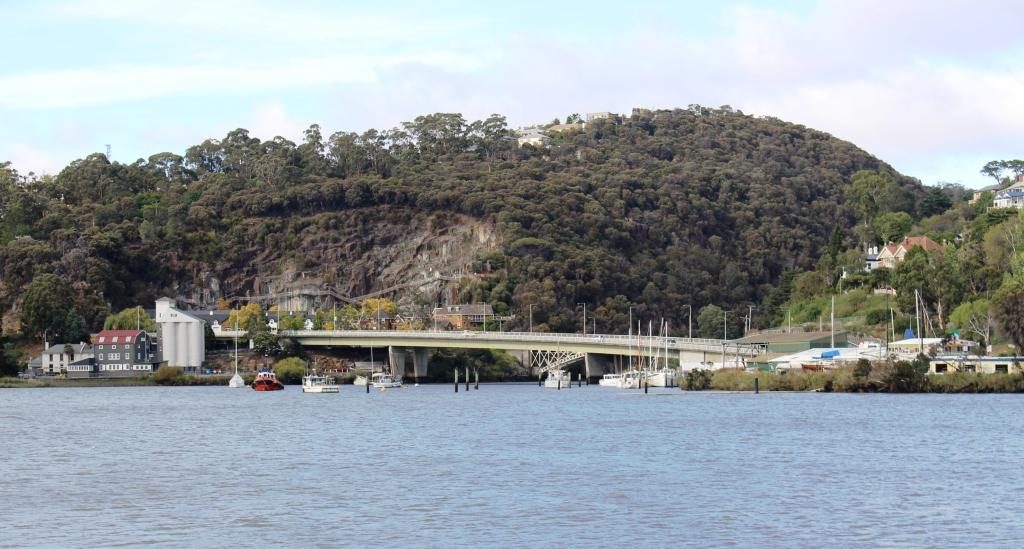
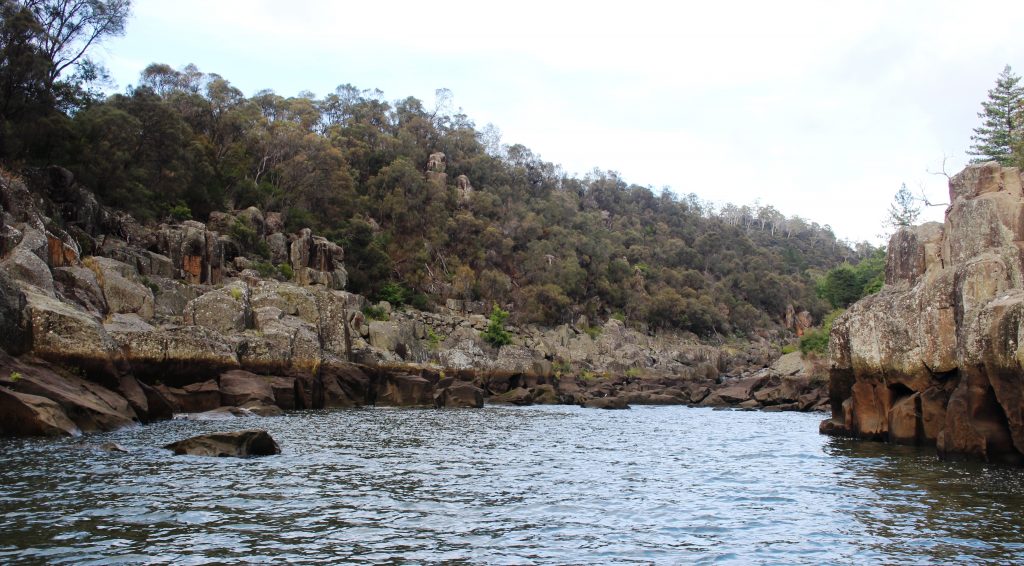
It is at the wharf area that the Tamar splits into its two major tributaries, the North Esk and South Esk Rivers. The North Esk River turns to the east before moving off in a south easterly direction. The South Esk River flows from south of Launceston, through Cataract Gorge and joins the Tamar opposite the ferry terminal. We had crossed both Esk rivers on our drive two days earlier to the stately estate homes to the south of Launceston.
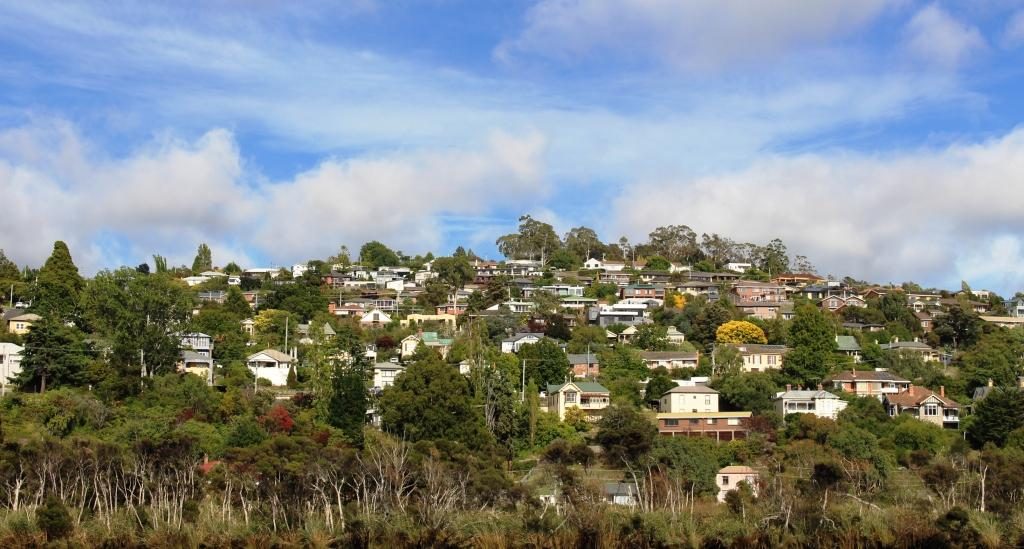
We disembarked and set off on the day’s drive. Our first stop was the shopping village at the Aspect Tamar Valley Resort at Grindelwald. There we found a neat little Swiss bakery with good coffee and pastries as well as specialty shops, within a Swiss themed shopping mall.
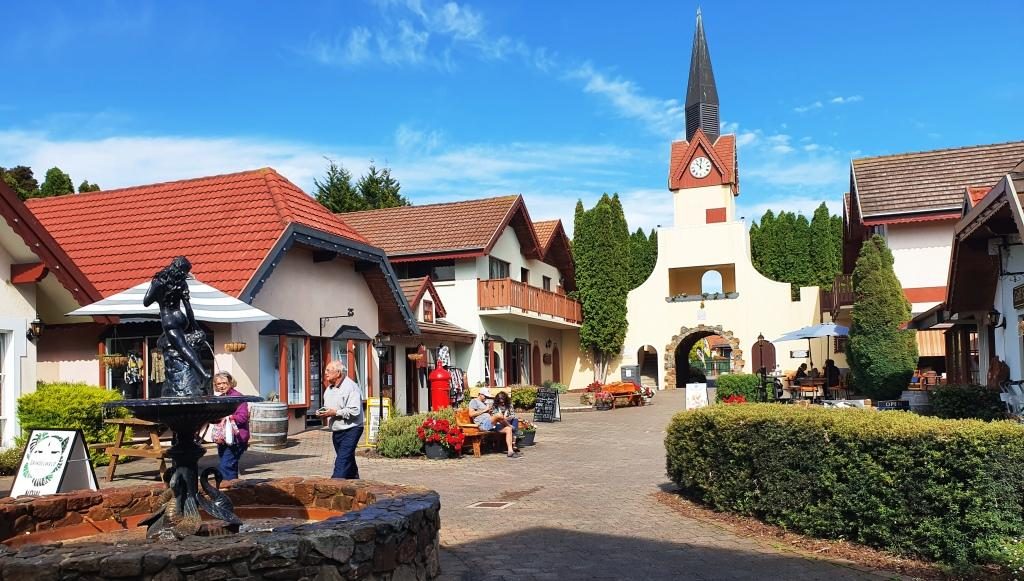
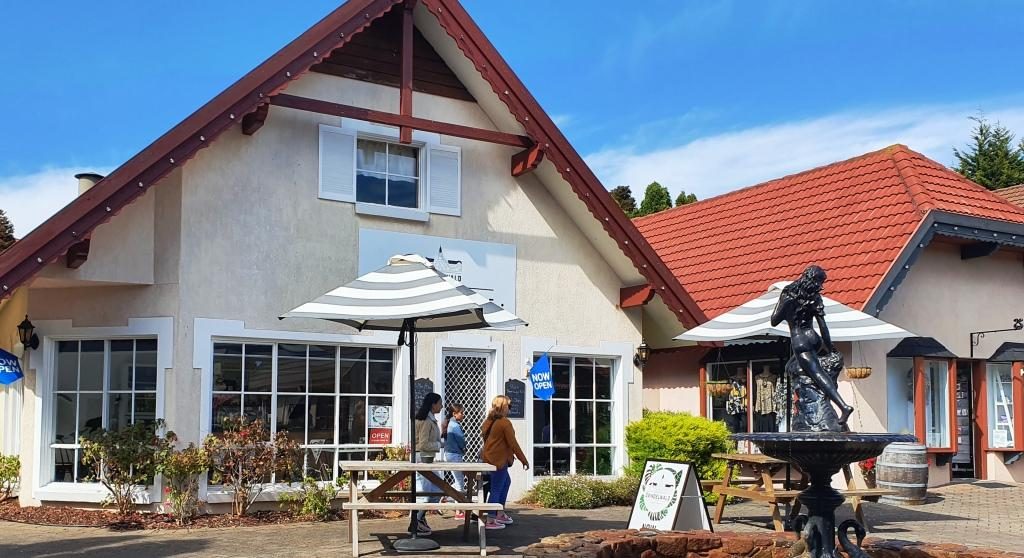
Having returned to the West Tamar Highway our next stop was Brady’s lookout, named after Tasmanian bush ranger Matthew Brady. The lookout provides sweeping views of the Tamar, particularly to the north towards the river mouth.
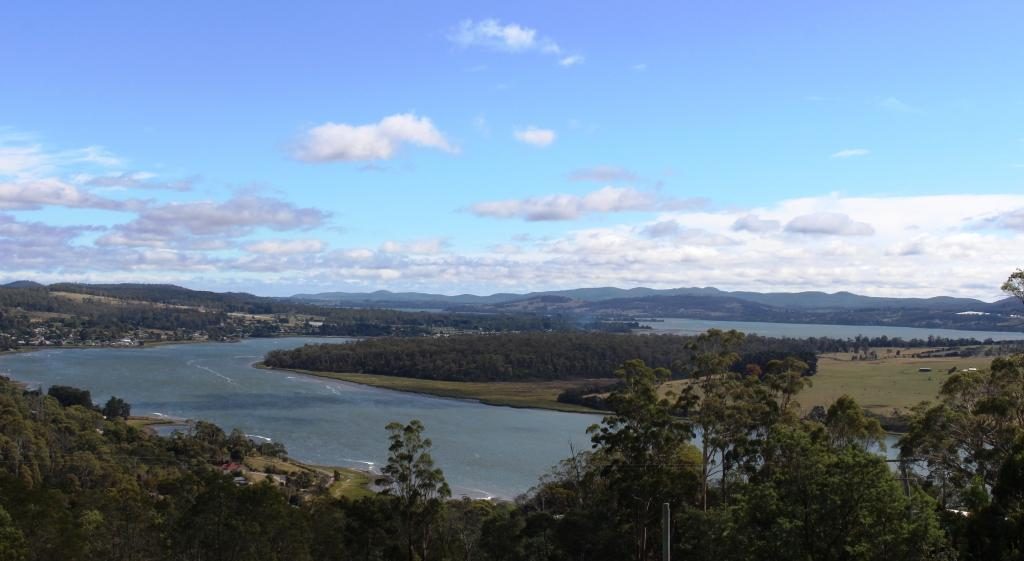
We headed then towards Beaconsfield, of gold mine collapse fame, but first made a detour to see and cross the Batman Bridge over the Tamar River. It is a single span “A” frame bridge with the span supported by cables. It looks quite spectacular but is not new. But new to us!
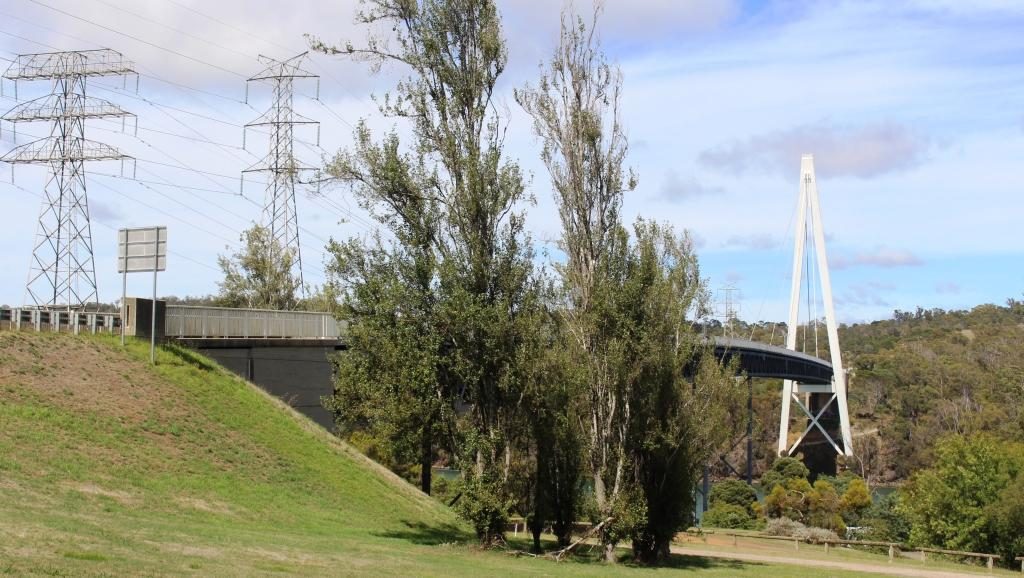
The mine collapse at Beaconsfield killed one miner and buried two more for a couple of weeks. The widely publicized event put the town on the map. The residents have worked hard to keep it there. The mine was on our itinerary but our interest was sharpened when we heard a couple of days before that the mine had been sold to a mining company and there were plans to restart gold production.
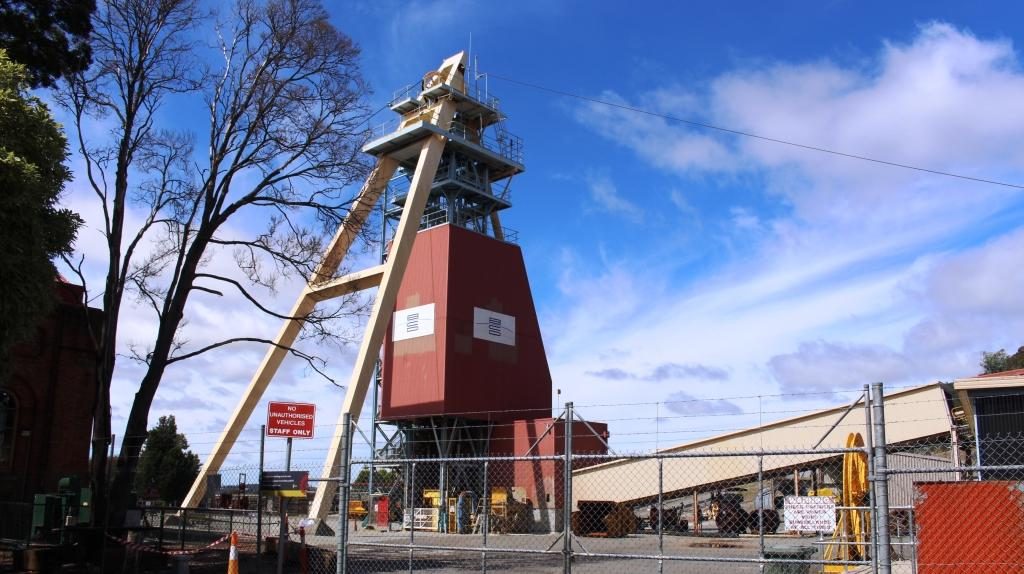
There is real history in old buildings but the heritage centre built to commemorate the mine disaster is the focal point. There is a mining display in part of the original mine buildings but it costs $16 for an adult so you need time to get value. You can get the idea from outside and you can shop in the attached gift shop for souvenirs and the like.
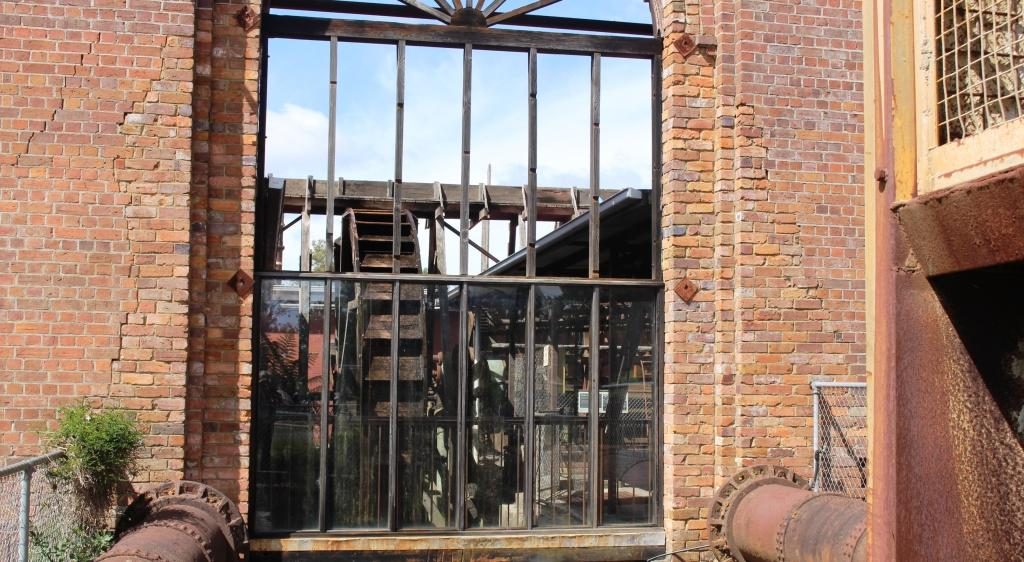
A new brewery has been built next door that has used the gold theme for a partial free ride. It is called the Miners Gold Brewery.
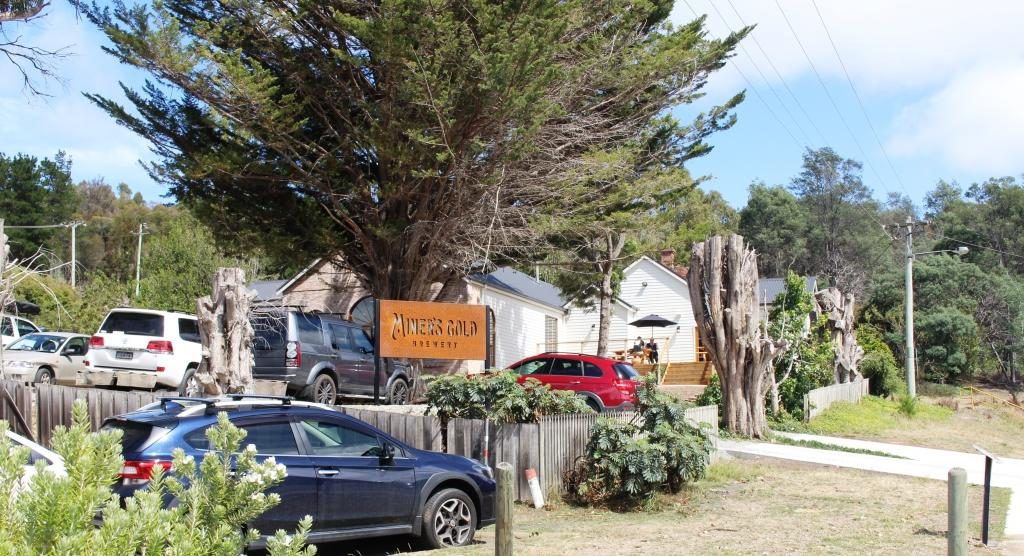
Moving on, we drove directly to Greens Beach, a seaside town immediately opposite Low Head on the west side of the Tamar Mouth. If it has a commercial centre we didn’t find in but it does have many large homes overlooking Bass Strait and the river.
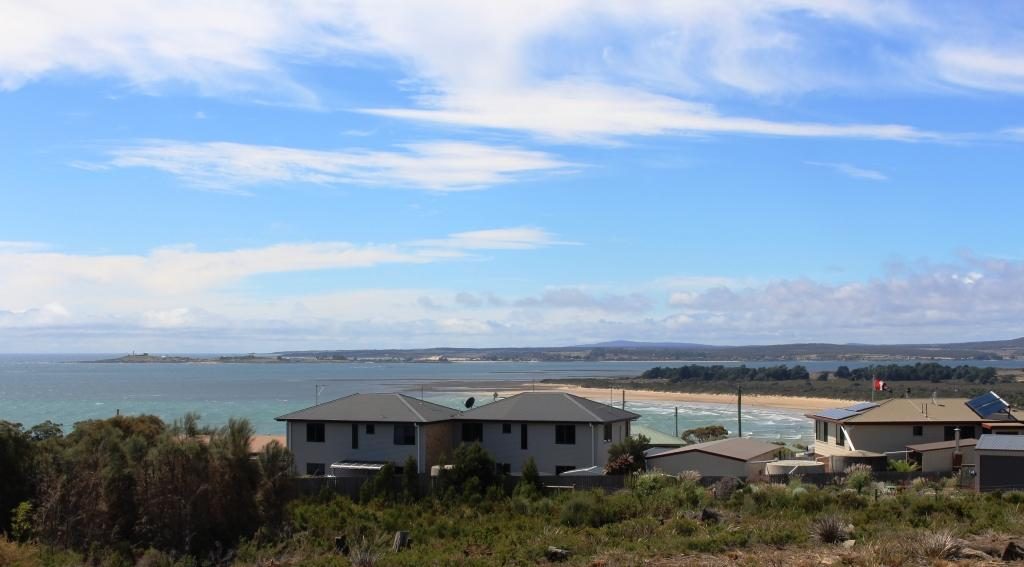
On the way back we detoured to Beauty Point, a pleasant river side community where, among other attractions, there is Seahorse World, an aquarium specialising, as you might guess, in sea horses. On the same wharf structure you will find Platypus House where you can see platypus and echidnas up close.
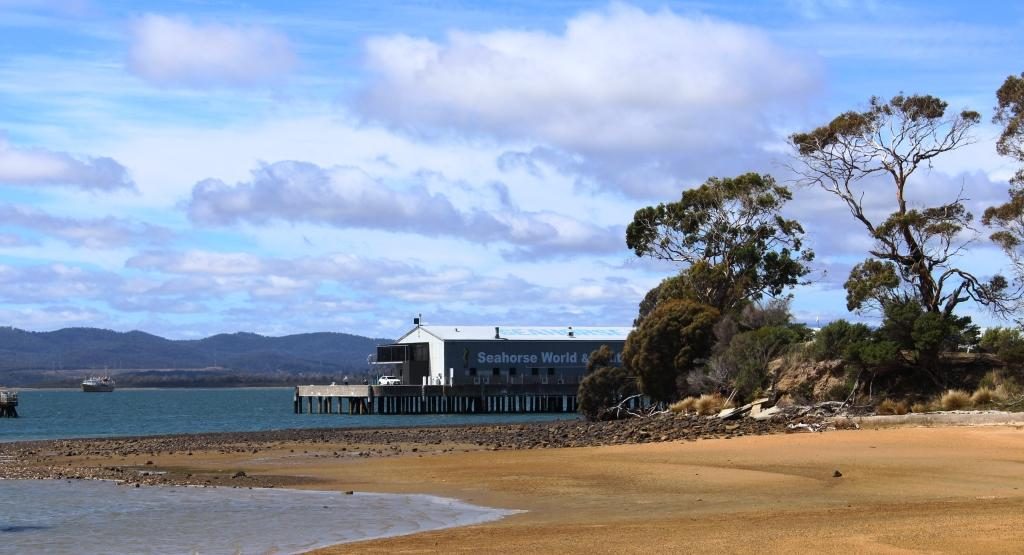
We stopped at the Jubilee Bakery for lunch as we passed back through Beaconsfield and discovered more history. The “Jubilee” part of the name was in honour of the 50th anniversary of the coronation of Queen Victoria. Irishman Paddy Manion opened the bakery in 1887. Some modernisation has since occurred but the original wood fired baking ovens remain in use. So my lunch time paste was cooked in the original wood fired oven, installed in 1887. The story goes that Paddy used to claim that his products were made with holy water because it came off the roof of the church next door.

We then drove south over a collection of country roads to Deloraine before joining the Bass Highway to Devonport.
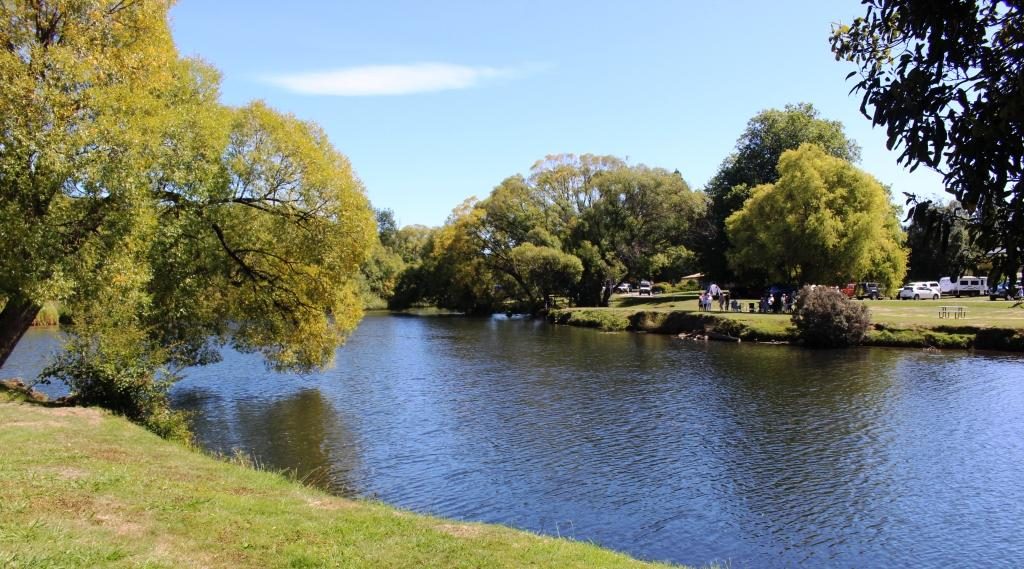
Deloraine, on the Meander River, is another town of historic buildings. The town is close to the mountain range known as The Great Western Tiers, named because of the way the range steps down, with each successive mountain lower than the last, as it progresses to the North West.
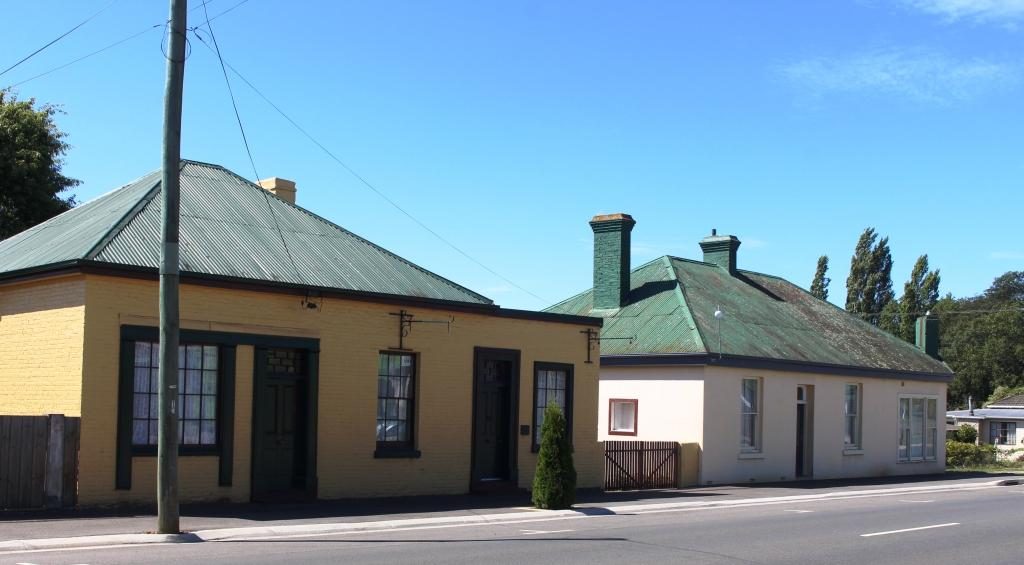
We spent the last night in Tasmania in a unit at the Postmasters Quarters, a modern development of historic buildings at East Devonport. This was another digital reception establishment with the access code texted to us, before our arrival. The interior decoration was a bit quirky but functional and comfortable. The location is within walking distance of the Spirit of Tasmania terminal. There is a pizza shop even closer.
